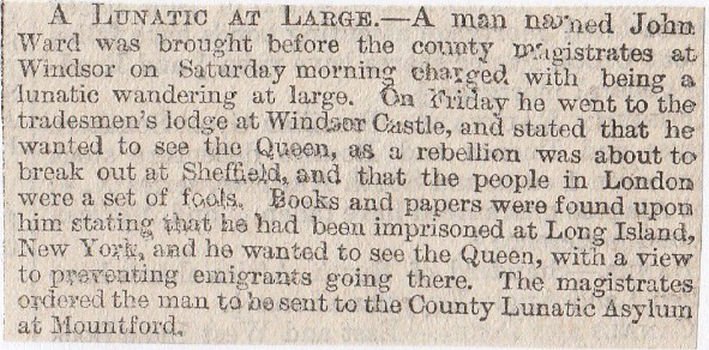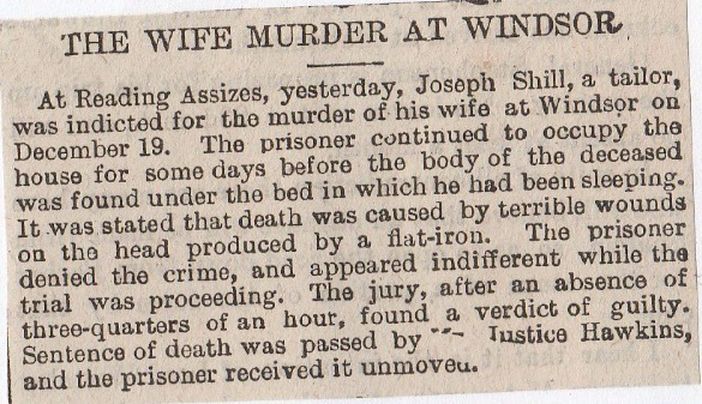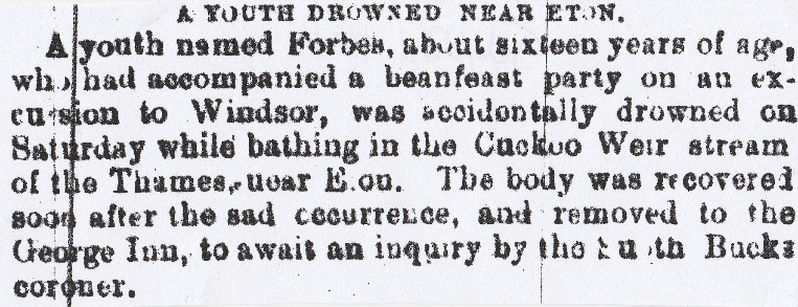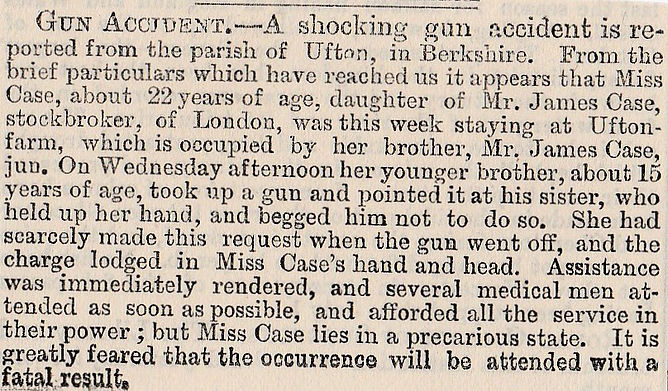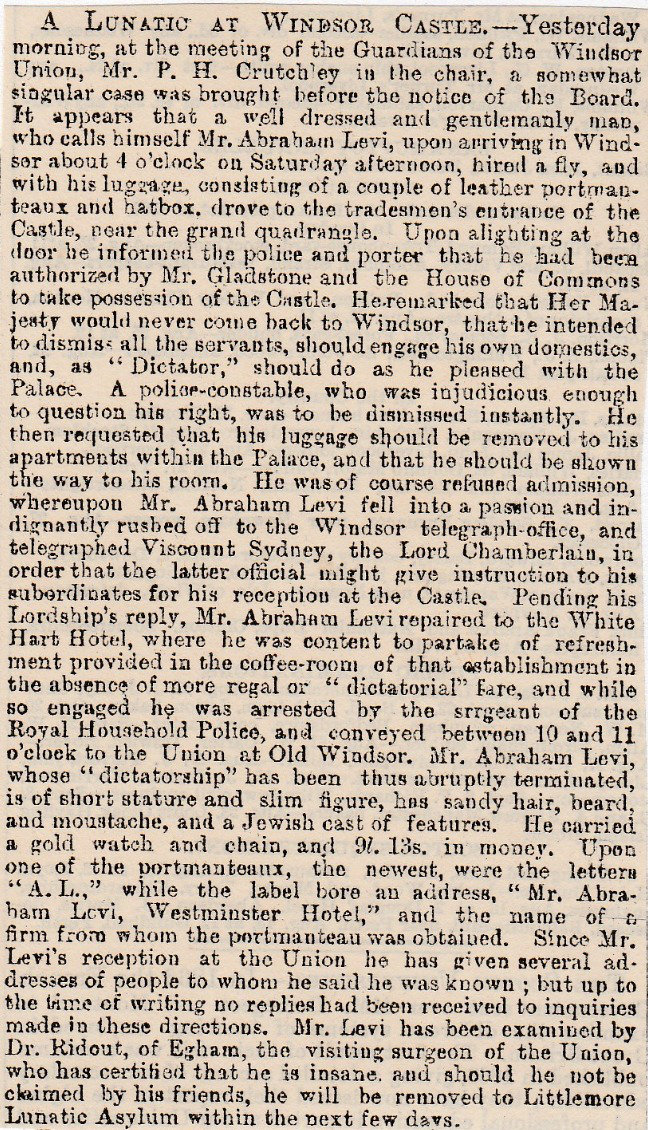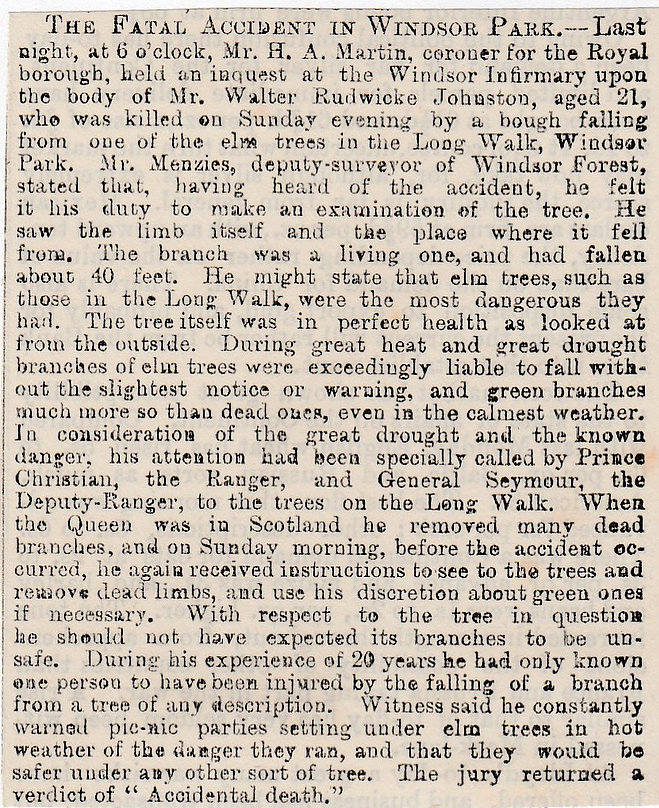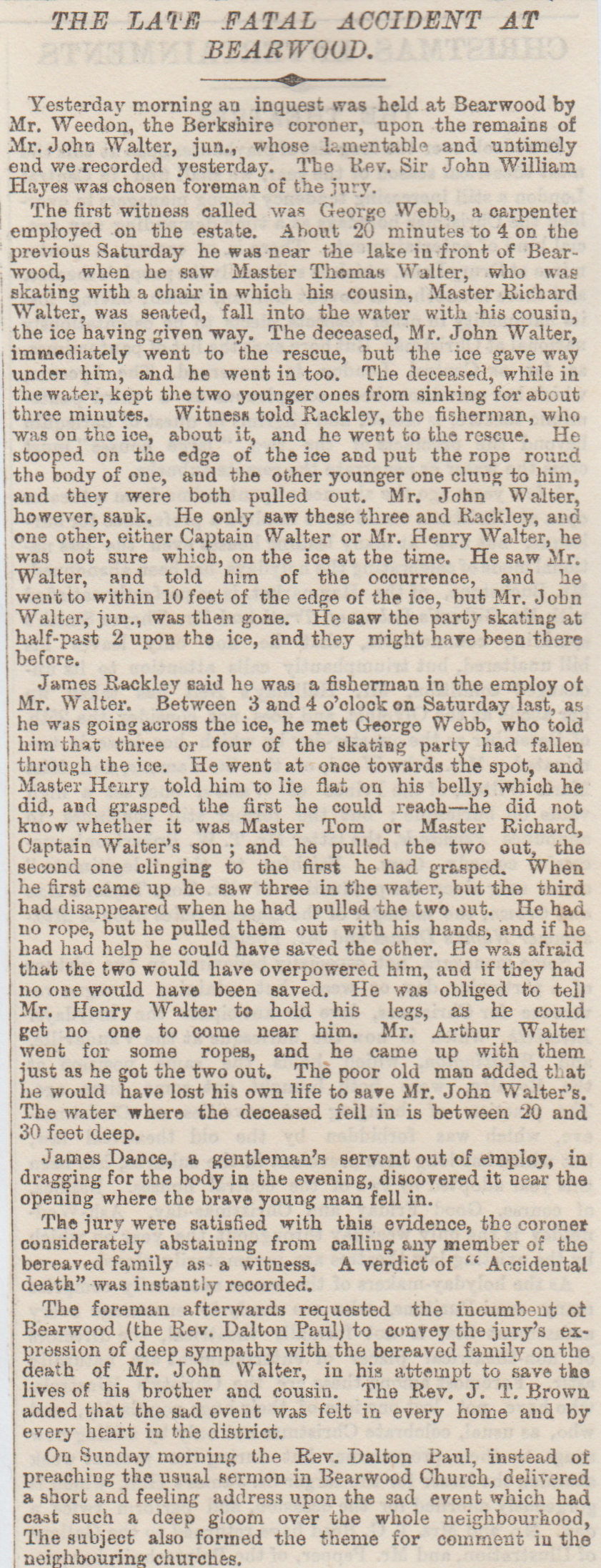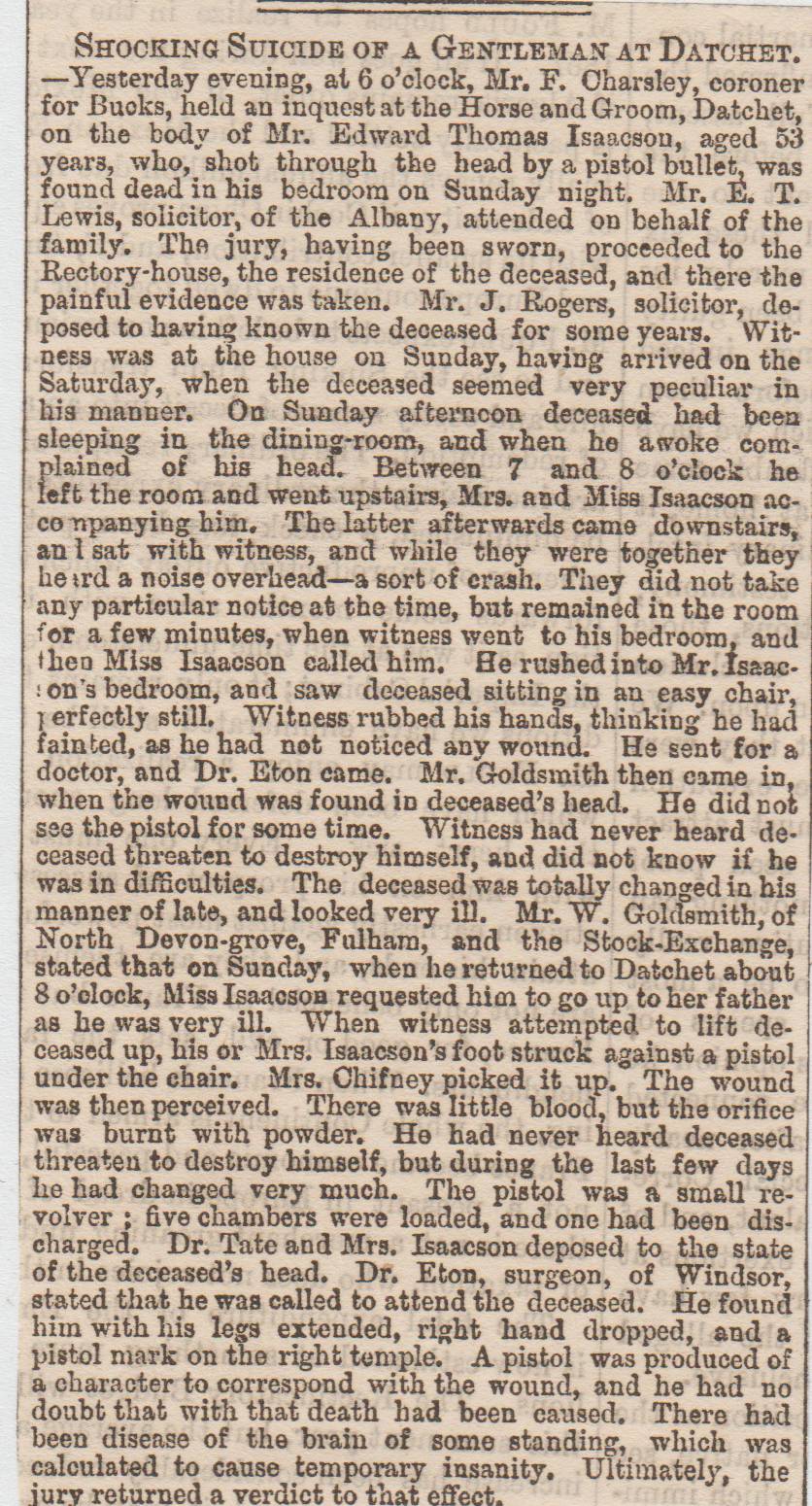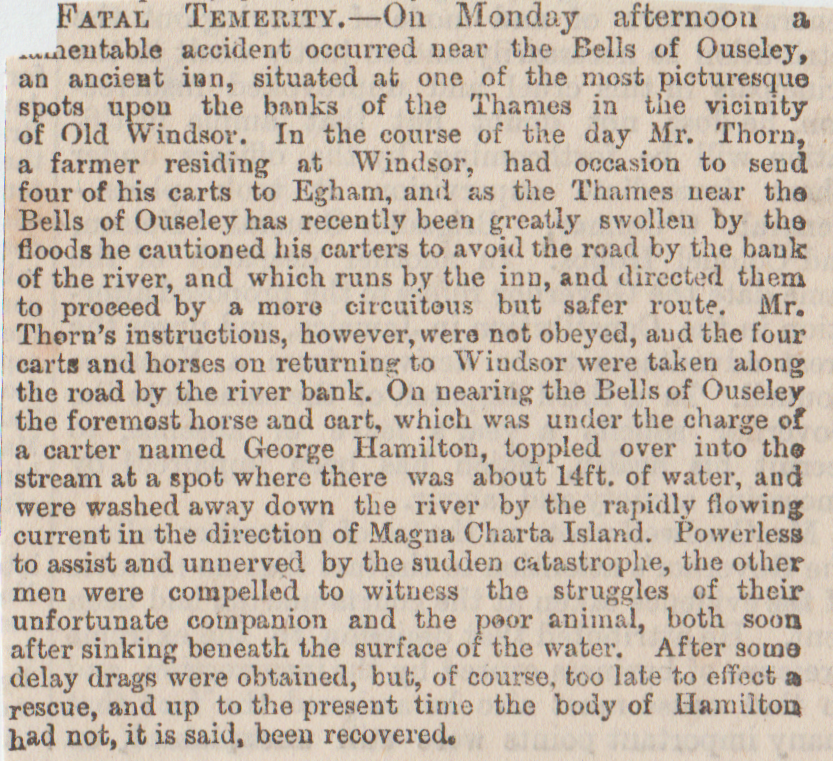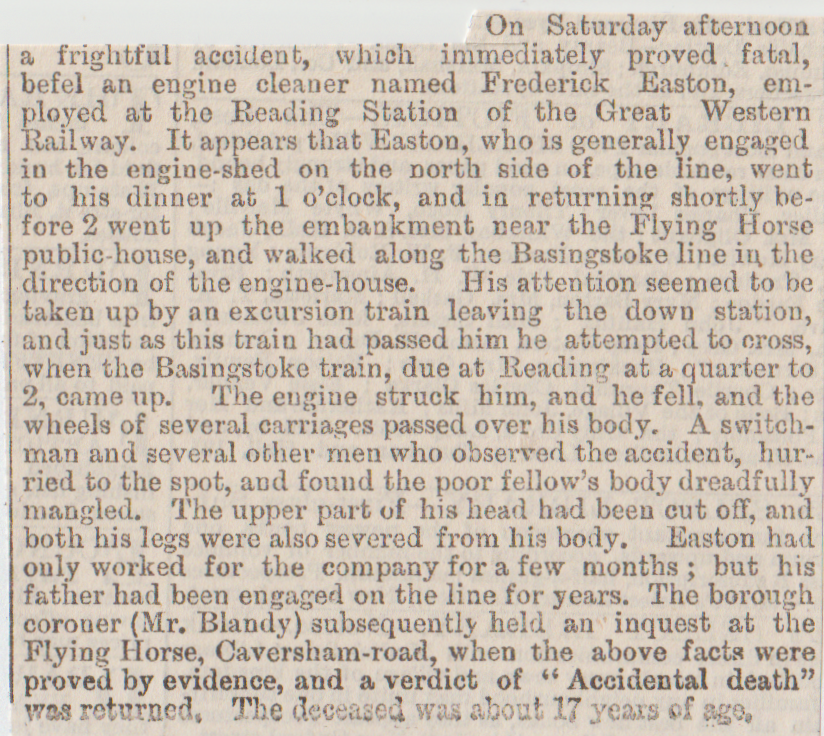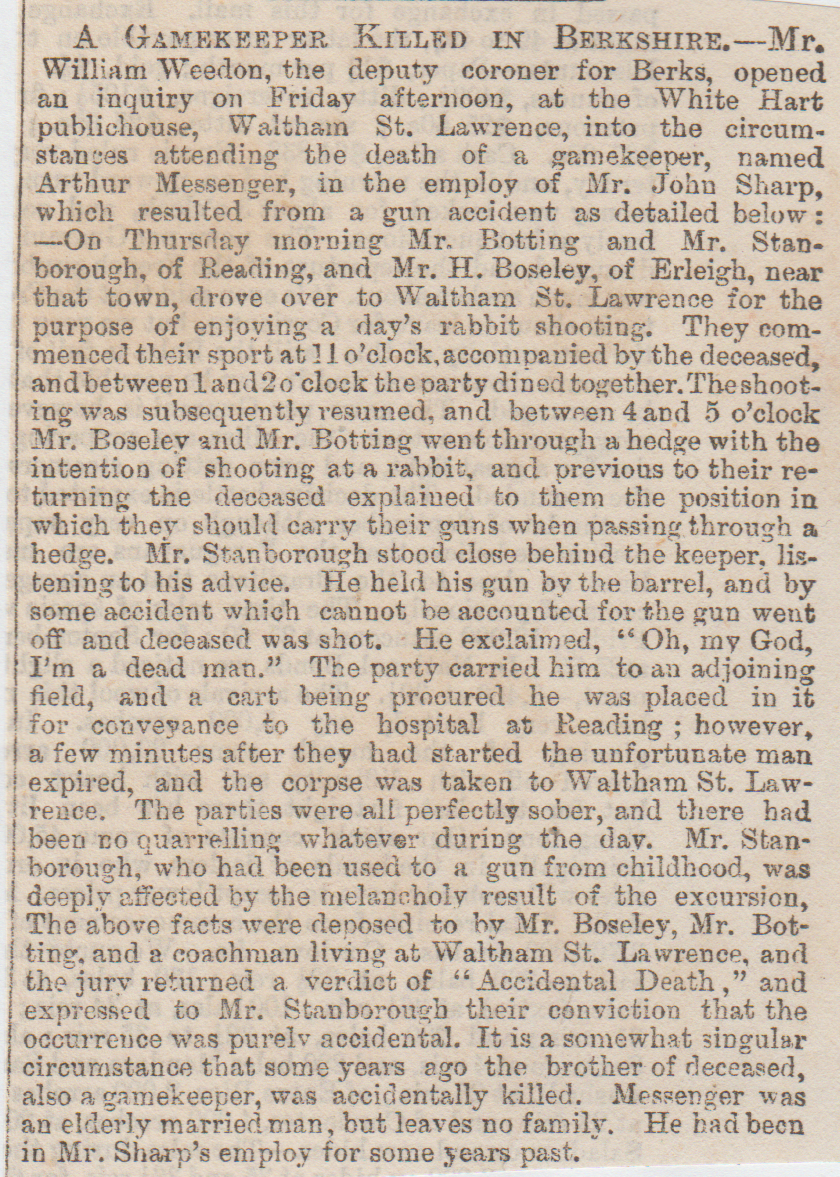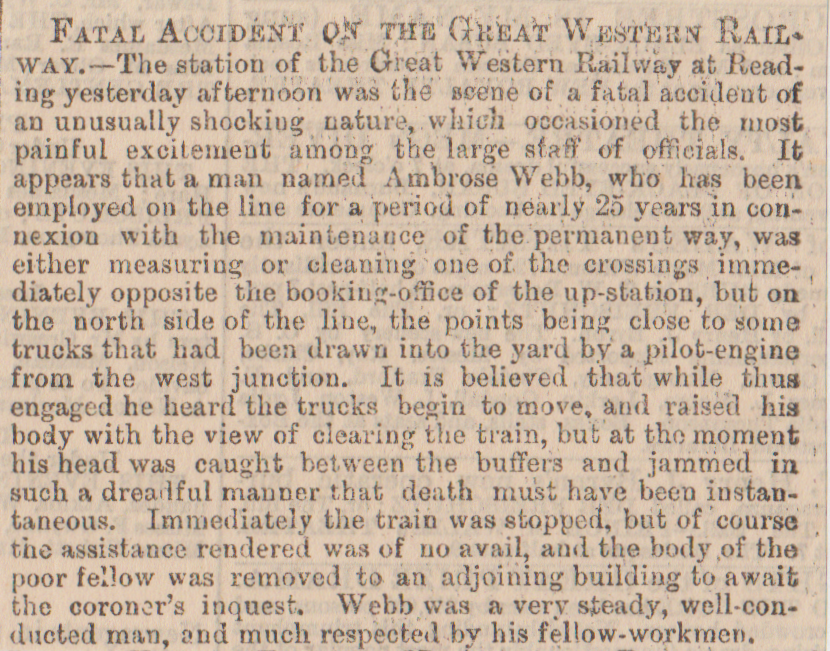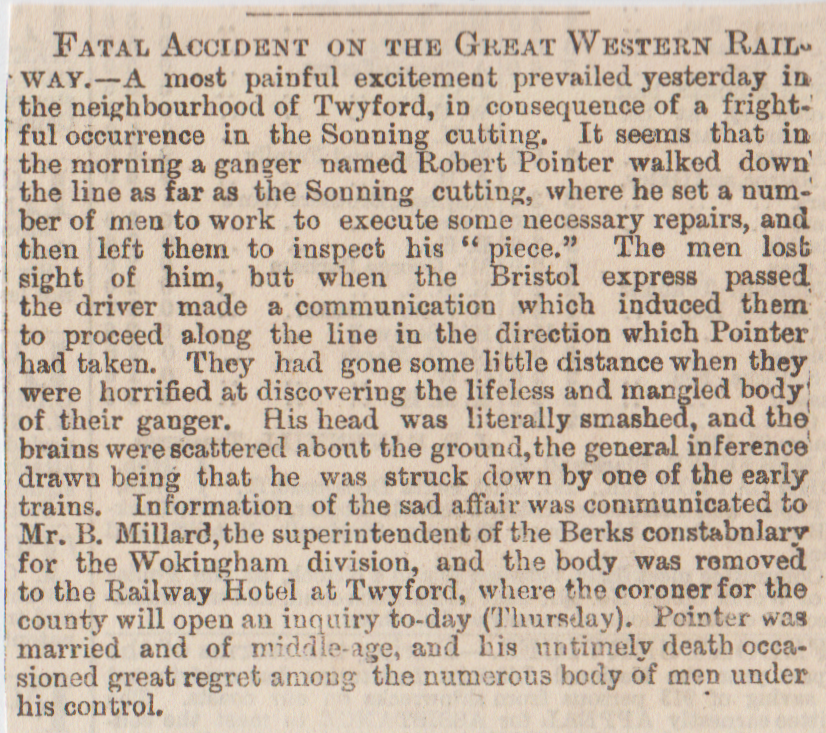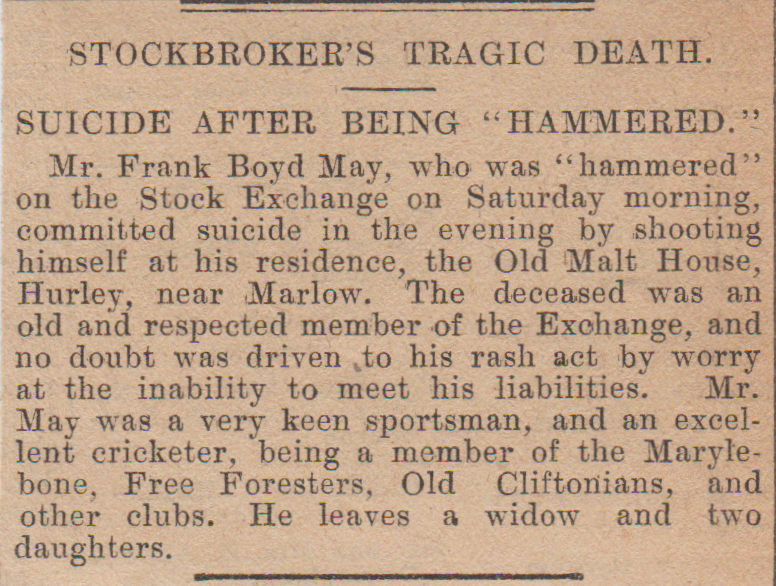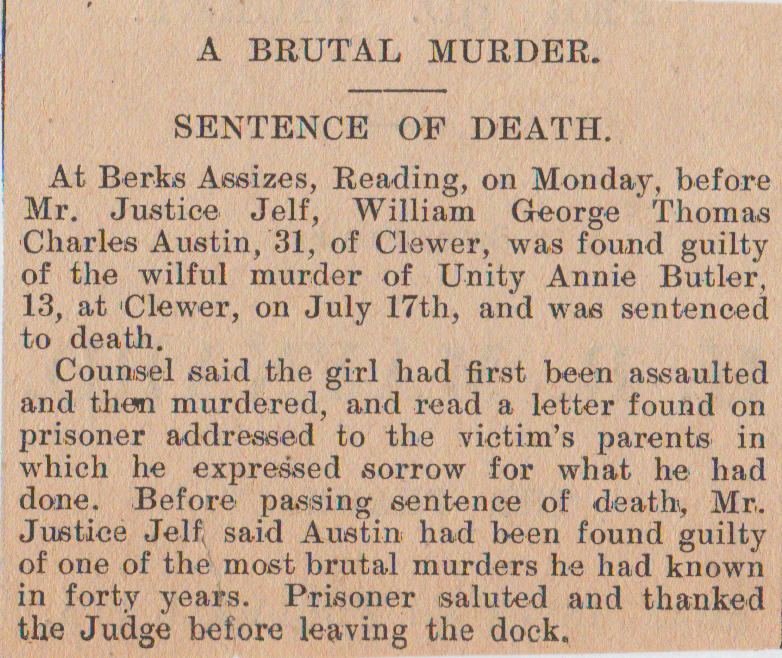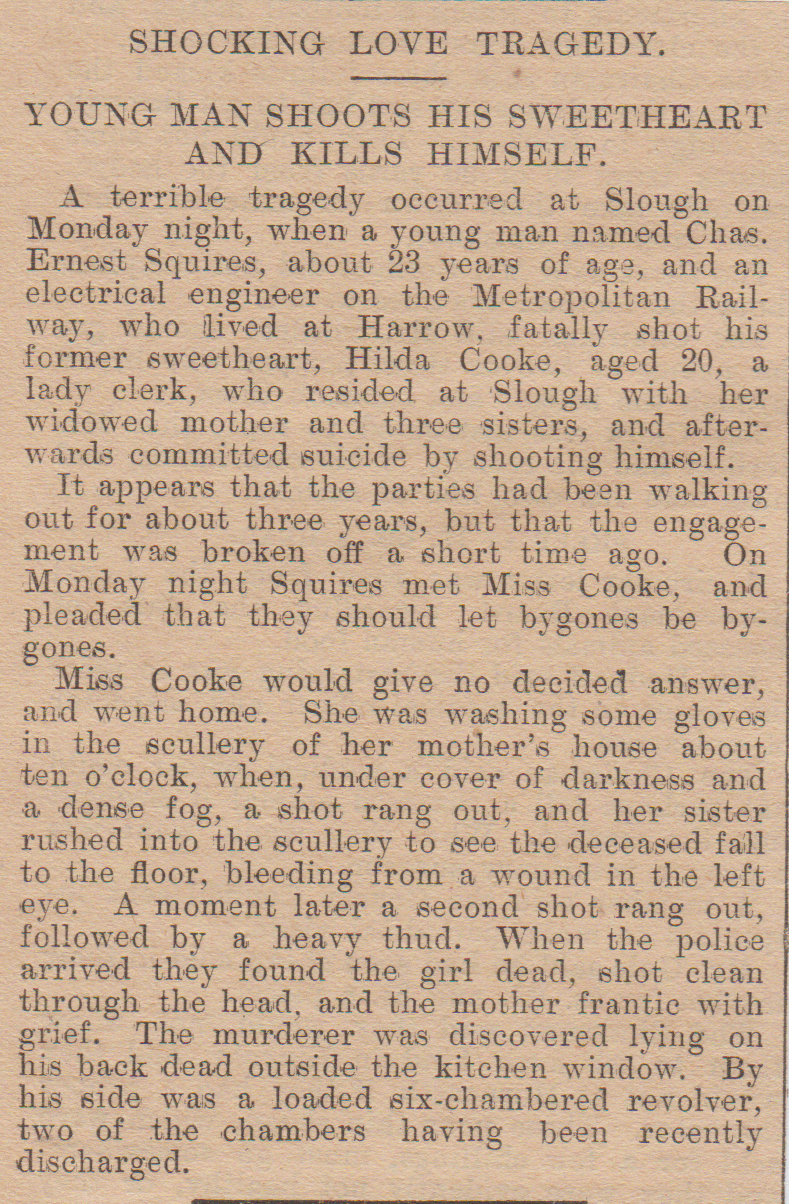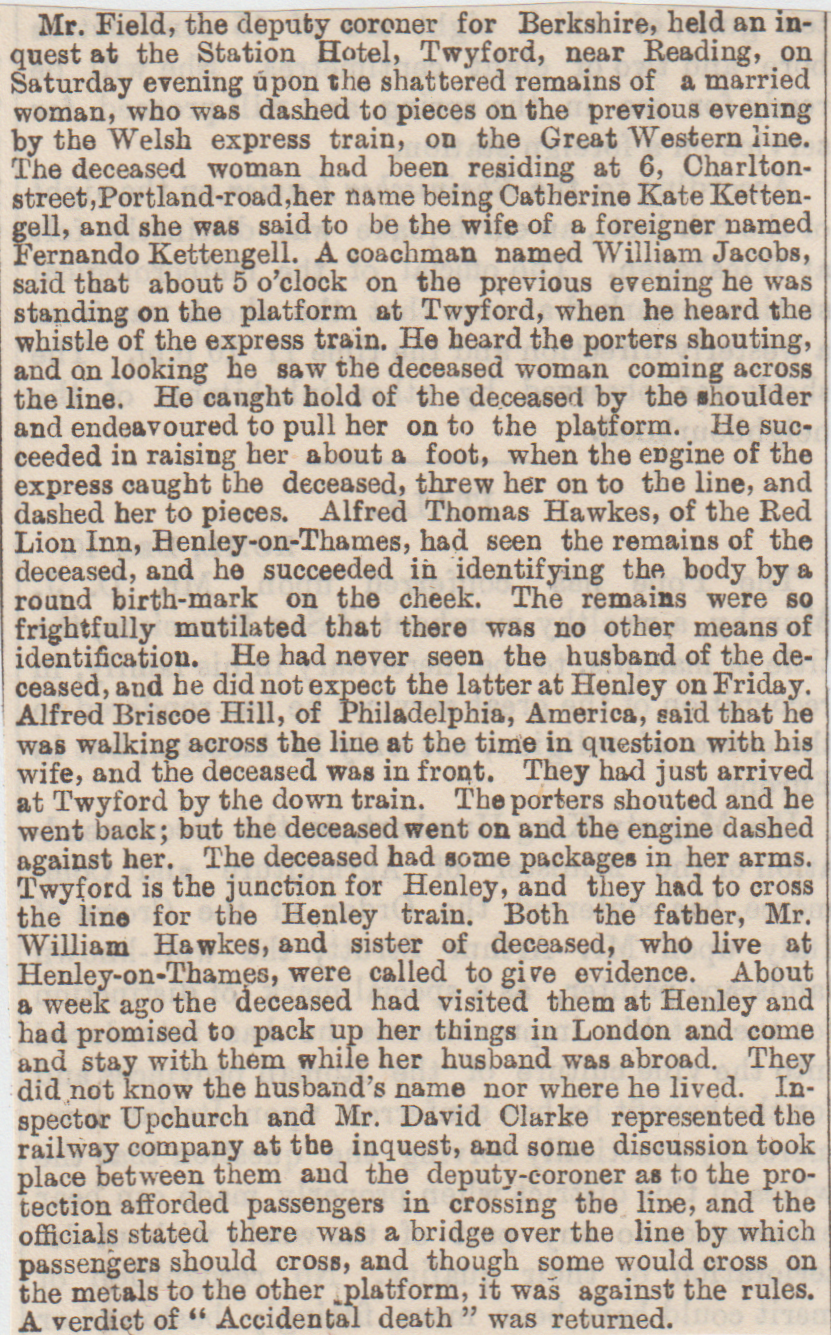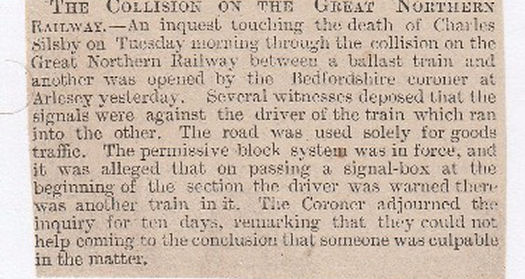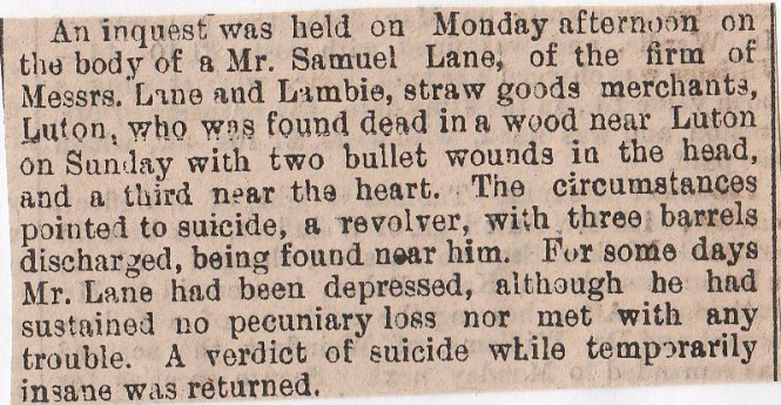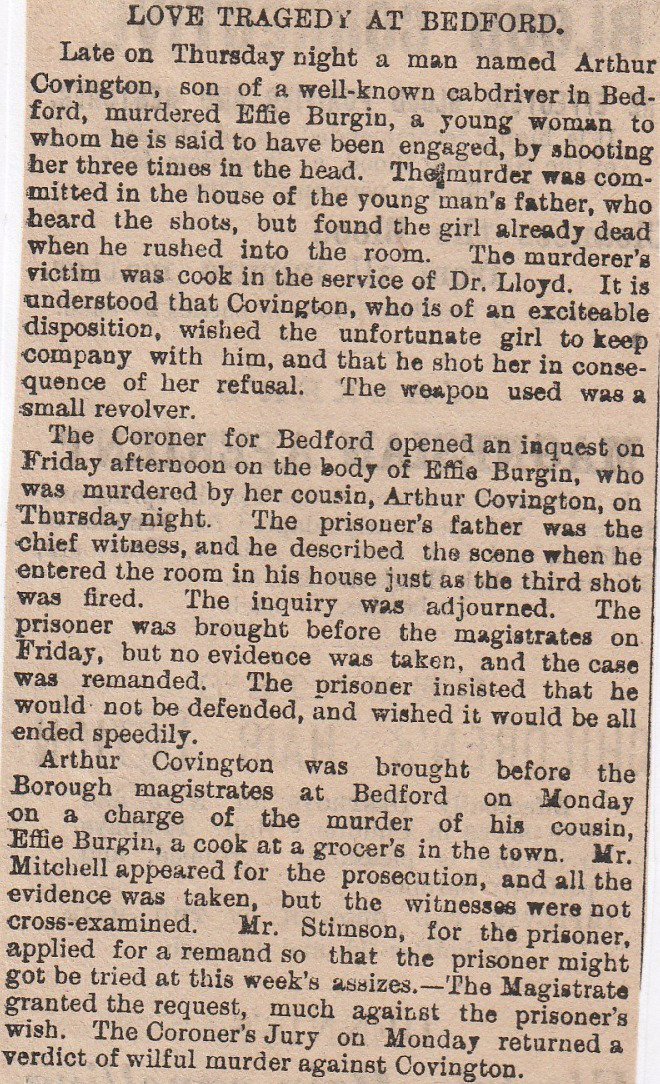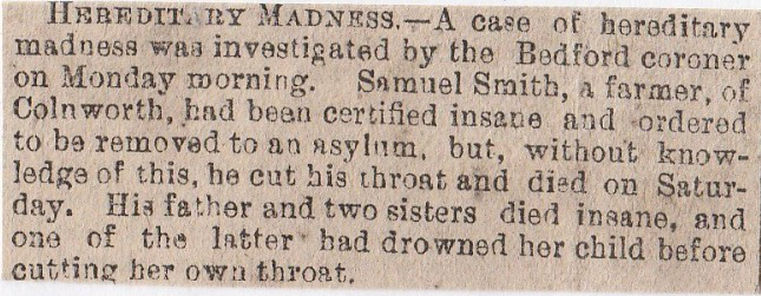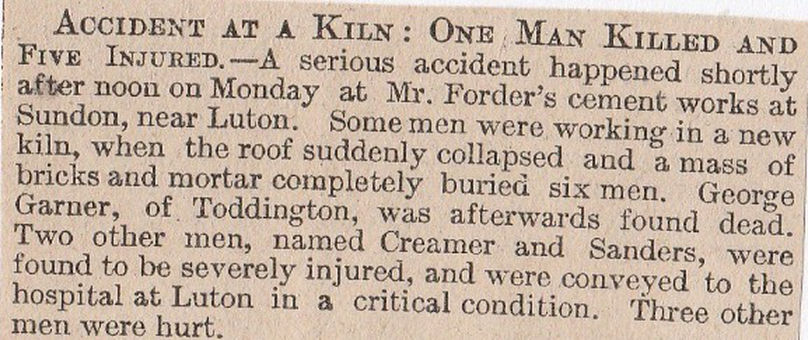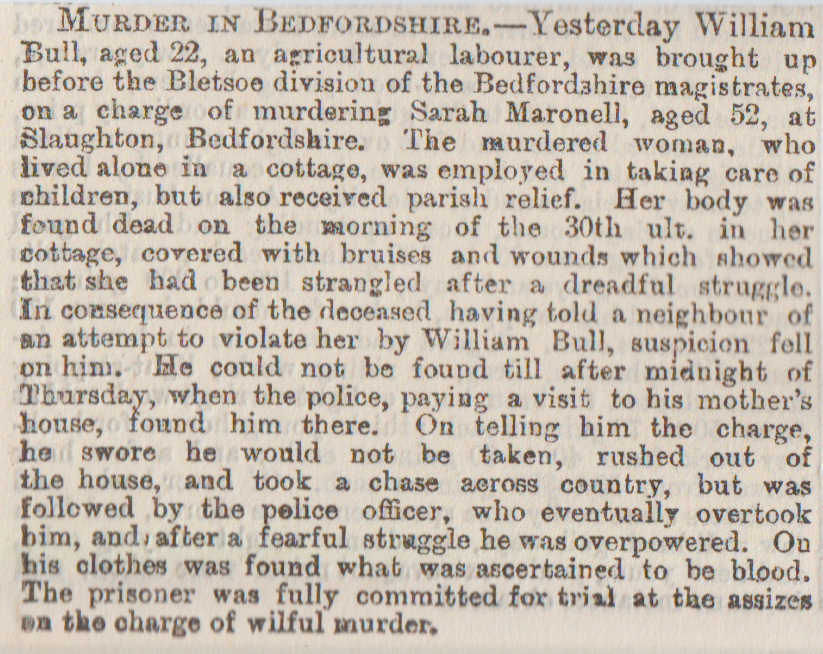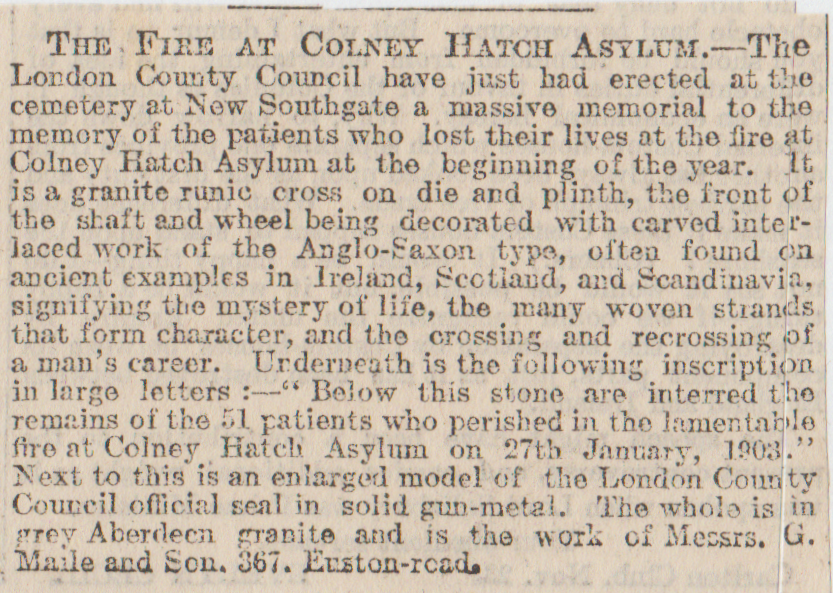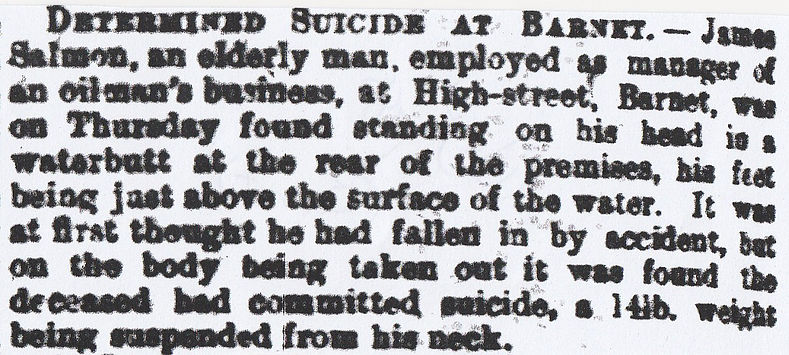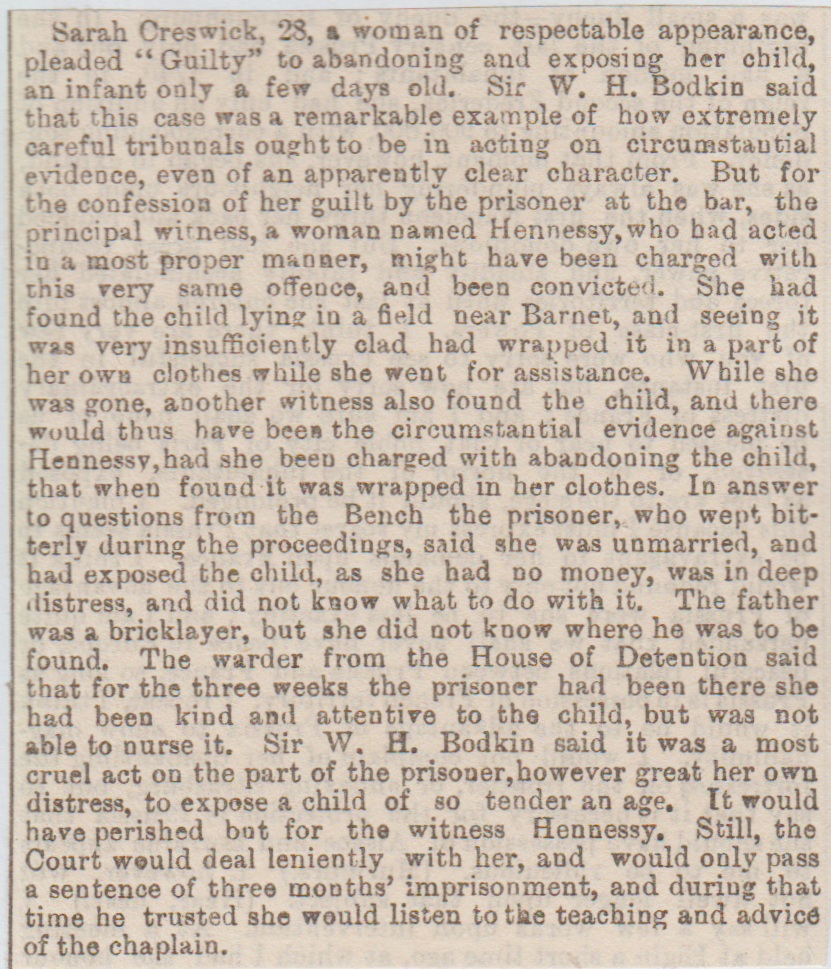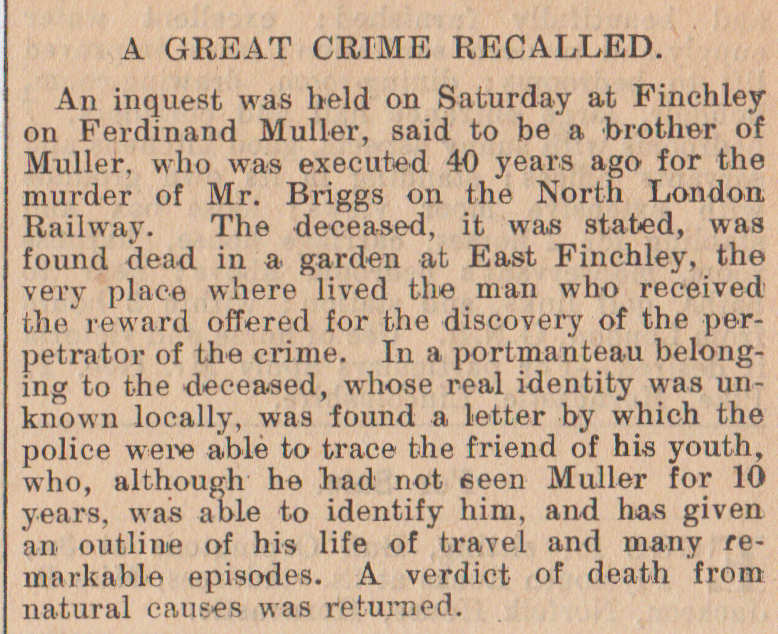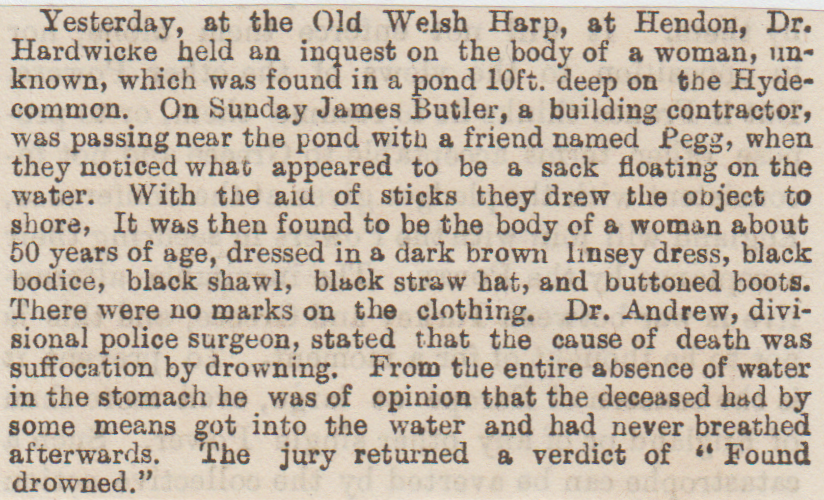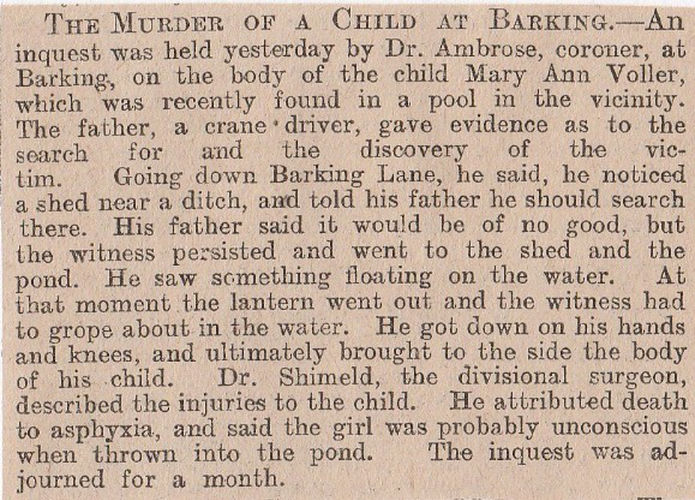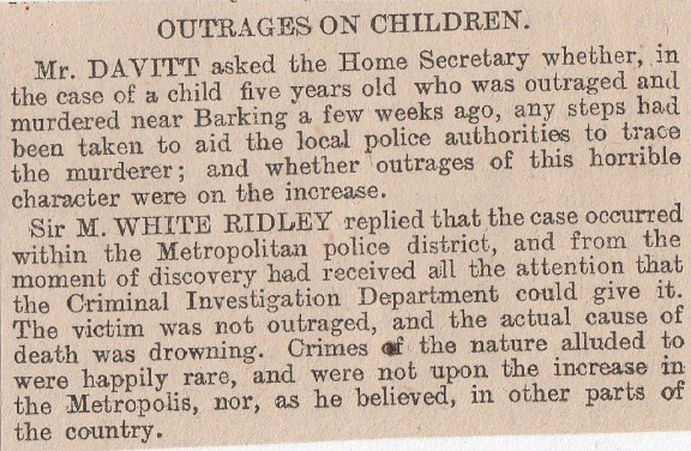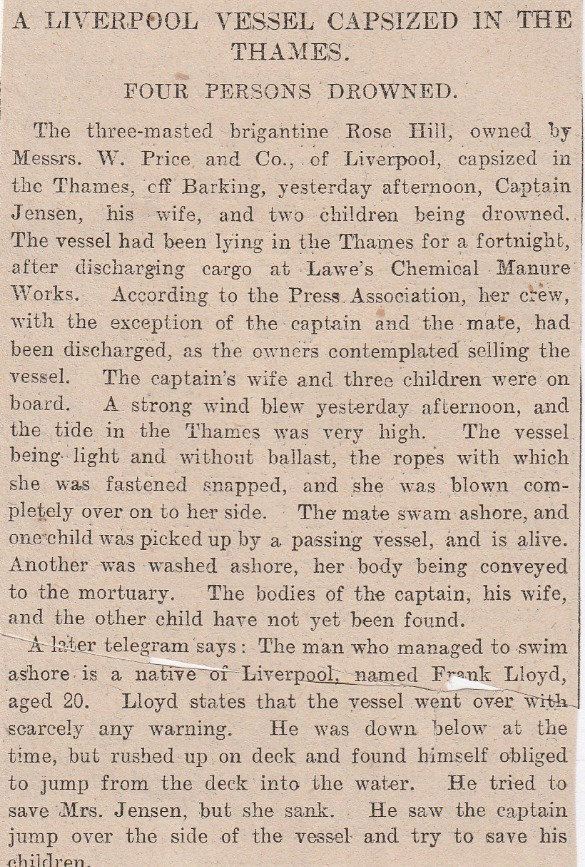1/ Clifton Suspension Bridge Suicide Survivor, May 1885
Sarah Ann Henley decided to leap off the bridge after being dumped by her sweetheart. She made the jump off the 300-foot bridge and survived to tell the tale! Her massive Victorian dress became a sort of parachute and she hit the soft silt of the Avon below. She was badly injured but remains in hospital. She got her brother to visit the ex-boyfriend and asked him to visit her. Her father was furious with the boy and went to the railway station where he worked and beat him to a pulp. Fellow workmates never intervened nor did the police, probably thinking he deserved a good kicking.(Did she live?)

2/ Clifton Suspension Bridge Suicide, September 1869
Victorian Bristol’s suicide hot-spot and this is when a young man placed his hat, coat and waistcoat at the side, climbed the edge, hung on for a bit, then let go and fell the 300-feet down into the mud bank you can see in the above picture. He was only a slight fella and mid-twenties, shabby clothes and a few coppers on him. The body was not identified.
3/ Clifton Suspension Bridge Suicide, May 1866
I bet over the years, hundreds have thrown themselves off this bridge, every time I found a story about Bristol, it involved the bridge. This story was about a Mr George Green, of Green & Co, shipbuilders, when he vaulted the barrier and dropped into the Avon below. He hadn’t thought about it very carefully as he forgot the tide was out, so he catapulted into silt and mud. He left a wife and two kids.
4/ Clifton Suspension Bridge Suicide, January 1883
The next suicide was a smart gentleman who was seen by several workers on a barge in the Avon. The body fell with such a smack on the mud bank below, that it took several men to extract it; it also fell near the barge whose occupants were watching the guy jump. He left identification in his pockets, and he was Samuel Cooper Dyer from Cardiff. (This was the nineteenth suicide on the bridge since it opened in 1864).
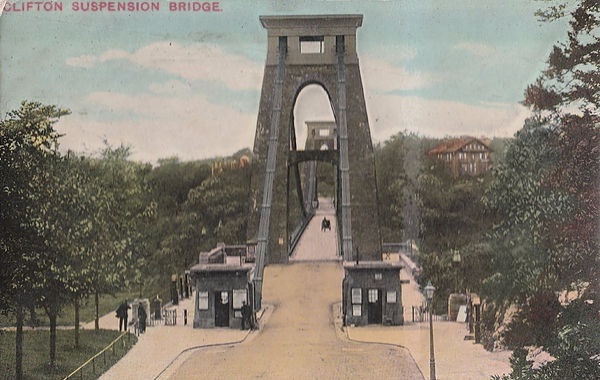
5/ Clifton Suspension Bridge Suicide, August 1887
A man leapt over the railing (you can see above, sort of!) and precipitated himself to the river below. It was high-tide and some men took it to Bedminster Mortuary, where it was identified as that of a young lad named Miller, a decorator by trade. (This was the twenty-fourth suicide since it opened)
6/ Clifton Suspension Bridge Suicide, December 1885
A man seems to have gone unnoticed in his leap of death, apart from a workman named James Gully who was next to the Port & Pier Station heard “Oh Dear!” and “Oh my!” as he came hurtling towards the river. The old myth that you die of fright before you hit the ground has been shattered, plus the first tale on the board where Sarah Ann Henley survived her attempt. This man seems to have gone under the water, bobbed up, and drifted down-stream. The man’s hat and stick were recovered and they had “T.D.” stamped on the silver band. (Was he identified?).
7/ Clifton Bridge Suicides (Facts & Figures) 1893
The first was a Mr Green in May 1866, and since then no less than thirty-two persons have met their death by leaping from the bridge. The list shows twenty-seven men, and five women have died here in twenty-six years. This does not include the young lady who survived her fatal leap.
The only months with no suicides have been July and March, the main time being May (7), August (6), November (4) and December (4). The oldest was a coachman from Clifton, who was seventy and jumped in October 1870, and the youngest was William Talling aged nineteen, who died September 1870.

8/ Clifton Suspension Bridge, September 1896 (Throws Kids Off)
This is one of the most infamous incidents on the bridge. Charles Albert Browne threw his two children, Ruby and Elsie over the edge, a 280-300 feet drop. He was a grocer at Langmore St., Balsall Heath, Birmingham, and business was on the wane. He had worked eighteen hours a day to make ends meet, but all in vain. Mrs Browne was advised by doctors to put her husband in an asylum but she refused, saying he was a good father and never drank. One morning he just clicked and took the girls on an errand with him. They spent all day with him and around midnight went to the bridge, and lifted 3-year-old Elsie and 12-year-old Ruby over the edge into the water. Amazingly they both survived. It is believed that he intended to jump over after he’d thrown them in but suddenly changed his mind. He was arrested shortly after the cruel act.
9/ Clifton Suspension Bridge Suicide, December 1889
A man named Deedes saw a man throw himself off the bridge as he was crossing it from the Somerset side. He heard the cry of “Lord, have mercy on my soul”, and put his stick and hat on the path when Deedes quickly ran to help, the man yelled “You are too late”, and sprang over. Police were told of the situation and sent P.C. 28C down to find the body; he was lying face up in the river bank. He had a thick moustache, fair skinned, brown tweed suit on, and nice Oxford shoes. In his pocket was a letter with the name of “E.G.Pearflour” mentioned.
Later……The body was that of Mr George Henry Davies of Uckfield, Sussex. He married two years ago, and his wife since learned he had been in an asylum. He just left home a month or so ago, sent the odd letter to his missus but nothing else.
10/ Clifton Suspension Bridge Suicide, January 1890
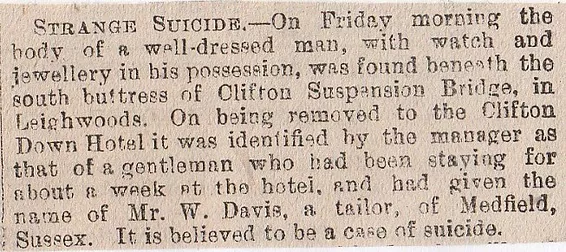
11/ Bristol Shooting, January 1890
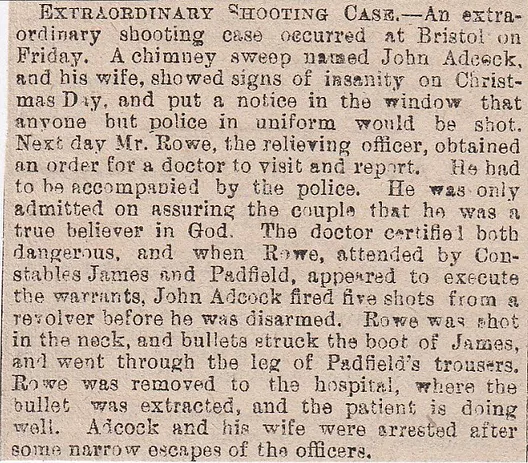
12/ Pensford Hill, August 1890 (Manslaughter)
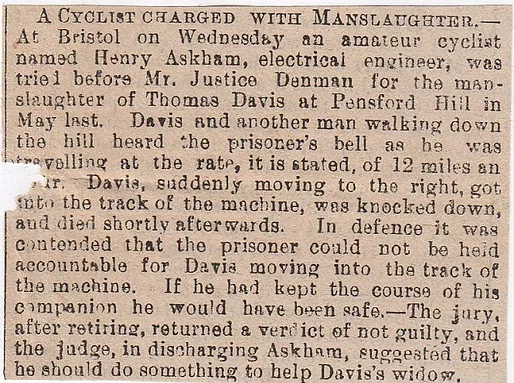
13/ Bristol January 1917 (Hanged From Lamp-post)
William Cole was off to work at 4-30 a.m. when out of the foggy mist, he saw something hanging from a lamp-post, he got closer and saw a man hanging by a noose. He went to the nearest house to raise the alarm but was scared to cut him down.
Coroner: You found a man hanging and was afraid to cut the cord?
Cole: I should think I was
Coroner: Are we living in the 20th century?
Cole: I did not know if I was doing right or wrong
Coroner: You had better go to school again
Deceased was later identified as John Knight, shipbuilder, who had depression. The coroner said he’d been hanging there for one or two hours without anybody cutting him down, and had he been so his life might have been saved.
14/ Bristol Baby Farm August 1899
A Bristol baby farm was investigated by magistrates and found to be shocking child neglect as part of the operation.
Seventy-year-old Sarah Leonard, along with her three daughters, and husband of one of them as well were the main instigators of this operation. An N.S.P.C.C. inspector said that the neglect shown to the children was unprecedented as they lived in filthy conditions. One of the kids taken away by the N.S.P.C.C. died a couple of days later in a local workhouse. Two of the children were insured, so death meant cash for the family. Adverts in the local papers plus forms and letters in reply. They got £60 for two kids within a few weeks. The advert that ran was: “Refined couple would adopt a baby; Happy Christian home; Healthy Bristol suburb”. One daughter and son-in-law got off scot-free, the mother and the other two got three months prison time.
15/ Clifton Suspension Bridge Suicide, December 23rd, 1885
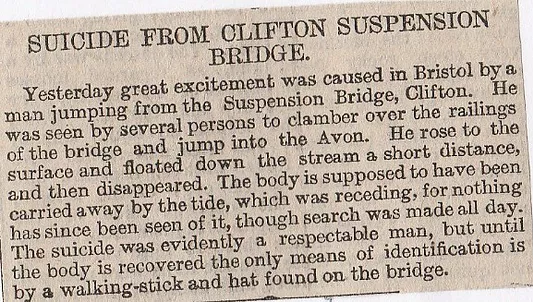
16/ Clifton Suspension Bridge Suicide, December 30th, 1885

17/ Frogmore Street, Bristol, July 1880 (Human Remains)
There was great excitement in the Bristol area when rumours suggested that body parts of a woman were found in a slaughter-house. A crowd had gathered to see what the hullabaloo was all about and were told by police that a human leg and arm had been discovered. When police questioned the neighbourhood they found out that they belonged to a local person’s private collection of curiosities. How they got into the slaughter-house is a mystery.
18/ Horfield Gaol May 1888
Arthur William Masters killed himself in a strange way at Horfield Gaol. He was found dead in his cell, and the post-mortem showed that he’d rammed some cloth down his throat with a wooden spoon, therefore suffocating himself. Also, it was proved that he couldn’t have done it with his hand so would have laid on the ground and pressed down against the spoon.
19/ Bristol Gaol, May 1843
Thomas Gray, an eighteen-year-old prisoner in a Bristol jail, hung himself with his handkerchief. The reason for this was the imminent sentence of transportation, and rather than being sent to Australia (which was the main choice for transportation between the 1780’s and 1860’s) he ‘d rather be dead.
20/ Clifton Suspension Bridge Suicide Survival, May 1885 ( See top of the page- Number 1. )
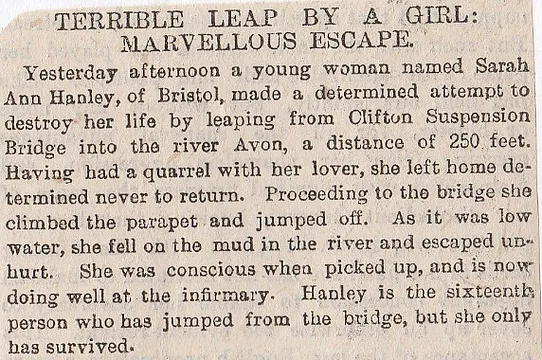
21/ St Vincent Cliffs Suicide, March 1850
A steamship arriving from Cork was nearing Hotwells and passengers saw two ladies on St Vincent Cliffs, and it seemed that one of them was getting the attention of the other to look at the steamer going by. Then the lady seemed to lose balance and fall down the craggy rocks, to the bottom, a distance of 300 feet. The passengers were in shock and as soon as the boat docked they went to the area where she fell taking help with them. At the base of the rocks lay a mutilated corpse, identified later as Miss Craven, a 17-year-old daughter of a solicitor. (Who was the other woman?)
22/ St Vincent Cliffs Suicide, January 1848
Edward Cox Derrick and Mark Phillips were walking near the Suspension Bridge (being built), they were looking down to the gulley and spotted something white on the rocks, on a ledge. They went down to see what it was and found the body of a man. The people in the Swiss cottage above called to them to climb back up. Men with ropes went down to recover the cadaver and several people said it was that of a Mr Thompson, of Clifton. It was taken to the house of 22, Caledonia Place, his sister’s house. Thompson kept two lodging houses (1 and 4 Princess Buildings) but stayed at his sister’s the previous night and was strange in his manner. He was up and down all night and was put back to be and even assaulted a servant who was trying to get him to his room. He ran out the kitchen door into the night and he had dressed himself beforehand. They searched for him, but the next time they saw him was when he was dead. The verdict “Killed himself by throwing himself from St Vincent Rocks in a state of insanity”.
23/ Bristol Cemetery Suicide, October 1909
A gravedigger was digging one day, when he saw a woman near a grave, getting undressed. He went up to her to see what she up to, and she replied that she swallowed some poison, then she collapsed in a heap. Next to her hand was a bottle labelled “Salts of Lemon”. They called for medical aid, but she was dead. (Who? Where?)
24/ Bristol Child Murder, April 1885
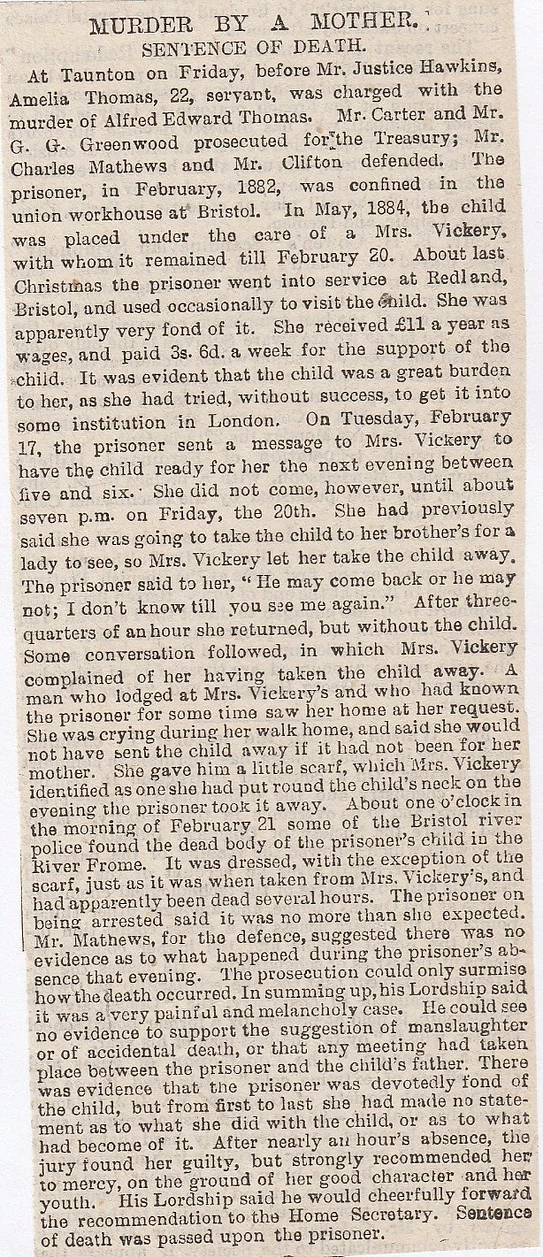
25/ River Avon Suicide, Bristol, September 1877
The body of a young man was found in the Avon, with a stone tied to his neck and legs tied together, was that of Frederick William Lawrence, who was a sculptor by profession. He had been melancholy for a few days and his zest for life had vanished with his work in Birmingham on the Municipal buildings had been a chore. He said he was going to see his Dad in Weston-Super-Mare, but he went to the river instead. A note was left, saying:-Goodbye to all. I can’t live any longer. I feel I am going mad.”.
26/ Fishponds Station near Bristol. June 1901 (Decapitation)
Just before the 7-57 from St Philip’s was due in, a woman was pacing up and down the platform looking edgy and nervous. She asked the porter about the departure of the next train to Bath. She waited till that one arrived, then there was a blood-curdling scream as she was run over by the train. As it passed over her, the sight of her body, less the head was to be seen. Passengers and staff rushed to help but obviously too late. Her name was Sarah Porcher, wife of a banker in Bristol, and who had just moved into 4, Mendip Avenue, Causeway, Fishponds. It is not known if it was a deliberate act or an accident.
27/ Royal Hotel Suicide, November 1887
A gentleman was found dead in his room at the Royal Hotel in Bristol. He was lying on a bed with a gun in his hand, and two shots in his body. One in his chest and the other in the forehead. Papers and letters were found, and his name is Gerstemperd Weyside, and thought to be from Forest of Dean (Gloucestershire?) Lovely name by the way! (What room? Is Hotel still there?)
28/ Bristol, May 1885

29/ Bristol Docks September 1873 (Corpse found in Hold)
Workmen were emptying the ship the “Annie Williams” of timber, which arrived a couple of weeks ago when they stumbled upon the body of a negro in the hold.How he got aboard the ship is not known, but the captain thinks he was loading the ship at one stage, and had fallen, or banged his head, was unconscious, and when he woke was miles away from land.His body was badly decomposed, which means he’d been there for weeks or even months.
30/ Rownham House near Bristol, March 1875 (Human Remains)
One of the gardeners was digging in the garden at Rownham House near Bristol when his spade hit a human skull. Further digging produced two more. The locals say the house is haunted. A medical man was in the area and performed a post-mortem on the collection of skulls. He said they were of a male, female and a child. Two had severe fractures and the third had a pistol shot in it. He also stated they had not been there more than twenty years or so. (Who were they?)
31/ Bristol Gaol Suicide, August 1857
A young lass of about 18 years of age, by the name of Hannah Pearce, killed herself by taking oxalic acid. She was only in for a minor crime of throwing a stone at a policeman and had been there a day, but she obviously couldn’t hack it in there. She’d scrawled these words “I have taken something that will send me to—-in five minutes”, and died in agony too.
32/ White Rock Copper Works, June 1837
Richard Daniel, a single 21-year-old, employed by the White Rock Works, while letting the molten copper fall into the water, for some unseen reason it exploded at the bottom of the water, causing his plank of wood to give way and he was tossed into the boiling hot liquid. He went under, then resurfaced, and his wails of pain could be heard all over the factory. His working partner also was burned but did not get immersed in the liquid. When the body was fished out it was totally bereft of any skin whatsoever, but amazingly he lived on for another twelve hours, then died in agony.
33/ Upper Berkeley Place, Bristol, May 1860 (Impaled on Railings)
About 4 p.m., a servant by the name of Elizabeth Limbrick, in the employ of Mr Scanlon, at No 5 Upper Berkeley Place, was rather precariously balancing on a window sill on the second storey up, trying to clean the windows. Another servant in the next house called to her that the milkman was there and she tried to clamber back in when she slipped and fell around thirty feet. If that wasn’t bad enough, she landed directly on some spiked railings below, four in all. Limbrick was extricated from the railings and brought indoors where a doctor said that she should be taken to the hospital. The injuries were left thigh broken, and part of the iron railing was embedded in her hip. (Did she die?)
34/ Kingswood Reformatory, December 15th, 1885
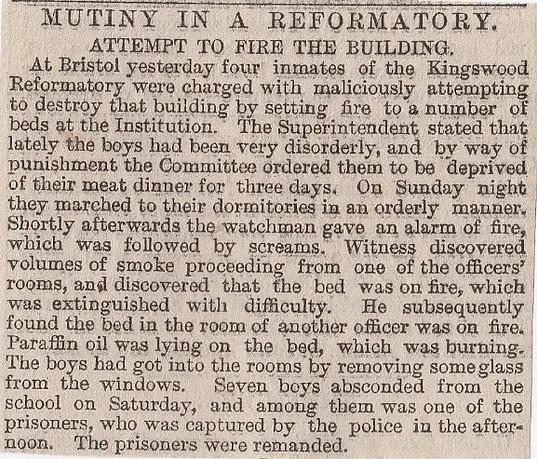
35/ Kingswood Reformatory December 22nd, 1885

36/ Clifton, Bristol October 1858 (Accidental Fall)
A vicar’s daughter from Gloucestershire, Miss Mary Richmond,18, went for a stroll on the downs of Clifton. She was seen near Lions Head Cliff, which is 300-feet high, and she appears to have been reading a book (texting in today’s world) and appears to have aimlessly stumbled over the edge. Who reads while next to a cliff? Another witness said she was gathering plants from the rocks, then fell over. She landed on the path that is next to the river bank and was barely recognisable due to horrific facial disfigurement. Ribs, arms and thighs were broken and dislocated jawbone. This is the fifth accident of the same nature in twenty odd years, yet no fence has been erected to prevent these accidents.
37/ Lawrence Hill Station Fatality, December 1907
Signalman John Parsons was on his way to work along the railway line and had just got past Lawrence Hill Station. An engine passed that way, towards Stapleton Road, and it knocked him down and killed him outright. John Phelps, the driver of the engine, told the porter, William John Faulkner, of 36, Morton Street, St George, that he’d seen a body on the track between Lawrence Hill and Stapleton Road. Police went to the spot, about 200 yards north of Easton Bridge, found 37-year-old Parsons body, minus the head.
38/ Bristol Channel Collision, February 1907
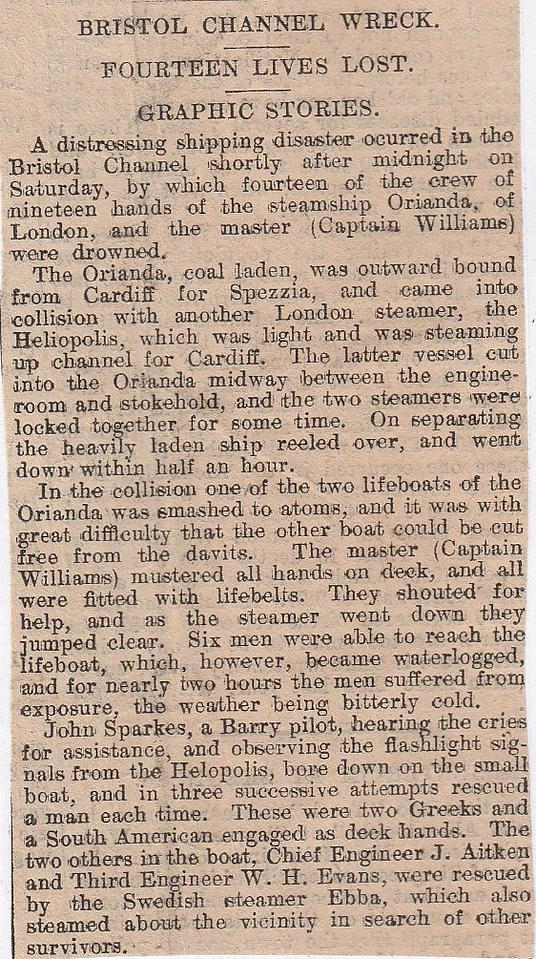
39/ Bristol Suicide, April 1892

40/ Bedminster Murder, May 1899
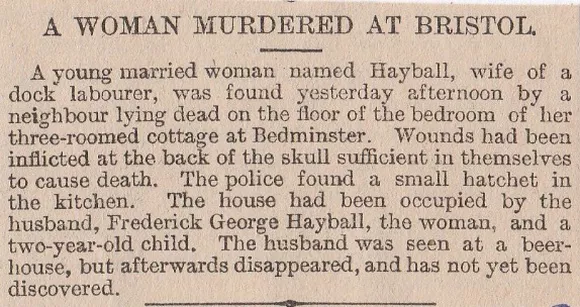
41/ Clifton Bridge Suicide, (Another) September 1870

42/ Fatal Fire at Bristol (West Street) April 1866.
43/ “Black Eagle” Explosion, River Avon November 1866 (It was opposite St Vincents Parade, now Hotwell Road, when the boiler exploded)
44/ Murder in Bristol? January 1867 (Henry Ware and Lucy Trim had an apartment at the Balmoral Castle pub on Lower Castle Street. This is where Ware came out and hit Sinnott with a gun. Ware was sentenced to seven years penal servitude for manslaughter)
45/ Gas Poisoning at Crofts End near Bristol. January 1904.
46/ Fatal Fire at Lawrence Hill, Bristol. December 1905. (Wife Refuses to Leave Blind Husband)
47/ Suicide on Clifton Suspension Bridge. June 1905
48/ Wreck of the Orianda, Bristol Channel. February 1907 (Fourteen crew drowned)
49/ Miser’s Hoard Found in Empty House, Bedminster. July 1907 (£100 is worth about £11,500 in 2018 money)
50/ Confession of Murder, Temple Parish, Bristol. Monday, December 13th, 1880
Tuesday, December 14th, 1880 (The Inquest)
Yesterday an inquest was held at Bristol on the woman Thomas, for whose murder a man named Yemm, on Saturday, gave himself in custody. The medical evidence was to the effect that, although there were bruises on the body, they were not sufficient to cause death, which resulted from serious apoplexy, and a verdict to that effect was returned.
51/ The Murder of Emily Daniels. November 4th, 1880
Tuesday, 23rd November 1880. (The Execution of William Distin)
William Joseph Distin was executed at Bristol yesterday morning for the murder of Mrs Daniels. Marwood was the executioner. Distin was so overcome that he had to be supported between two warders from the gaol to the scaffold, he had to be supplied with stimulants to prevent complete collapse.
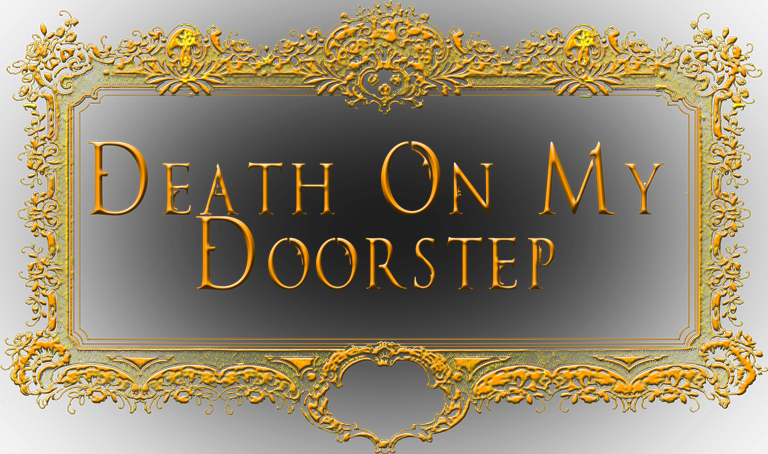
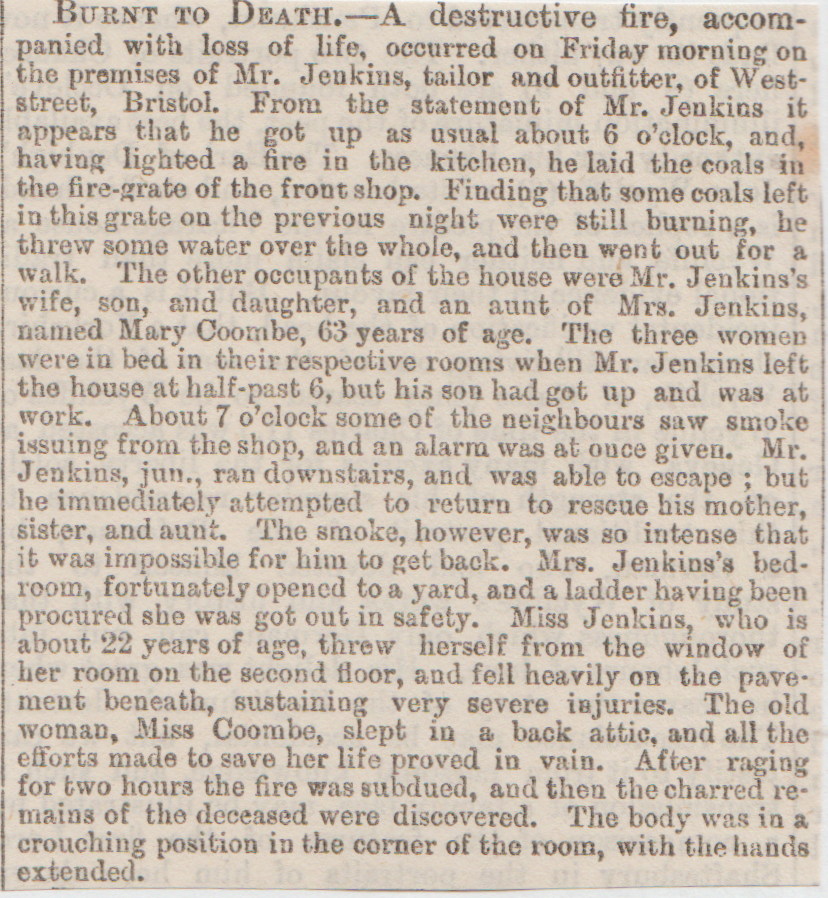

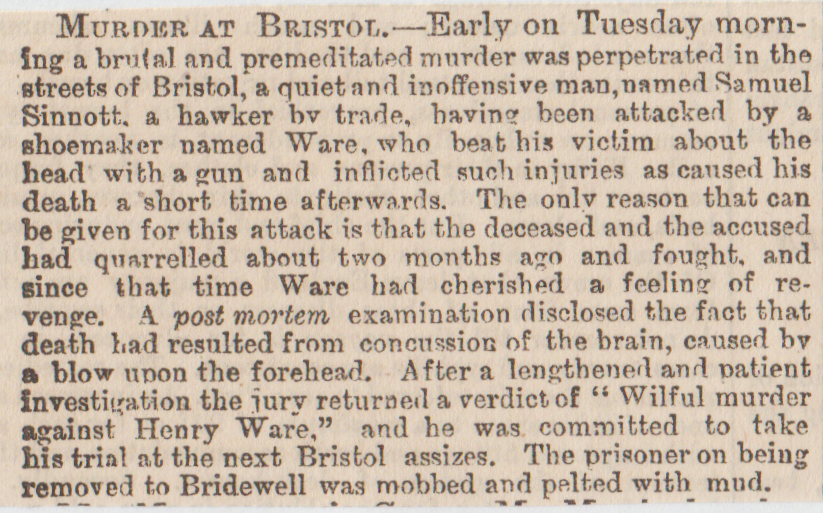
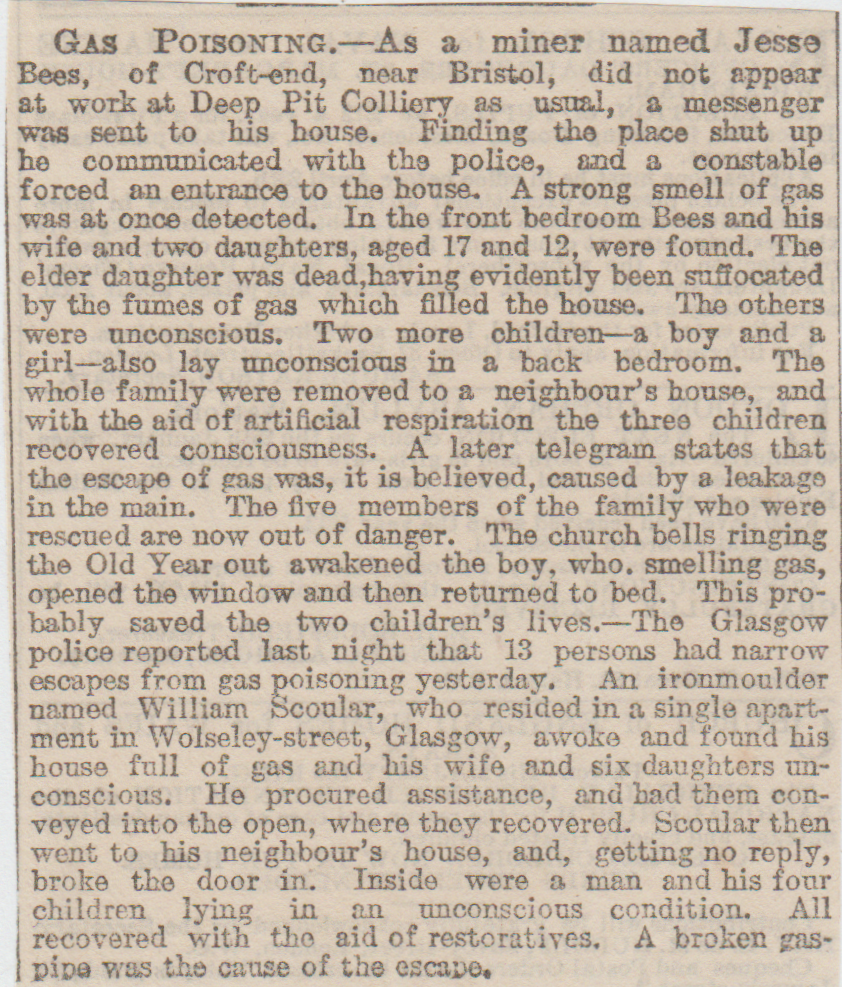

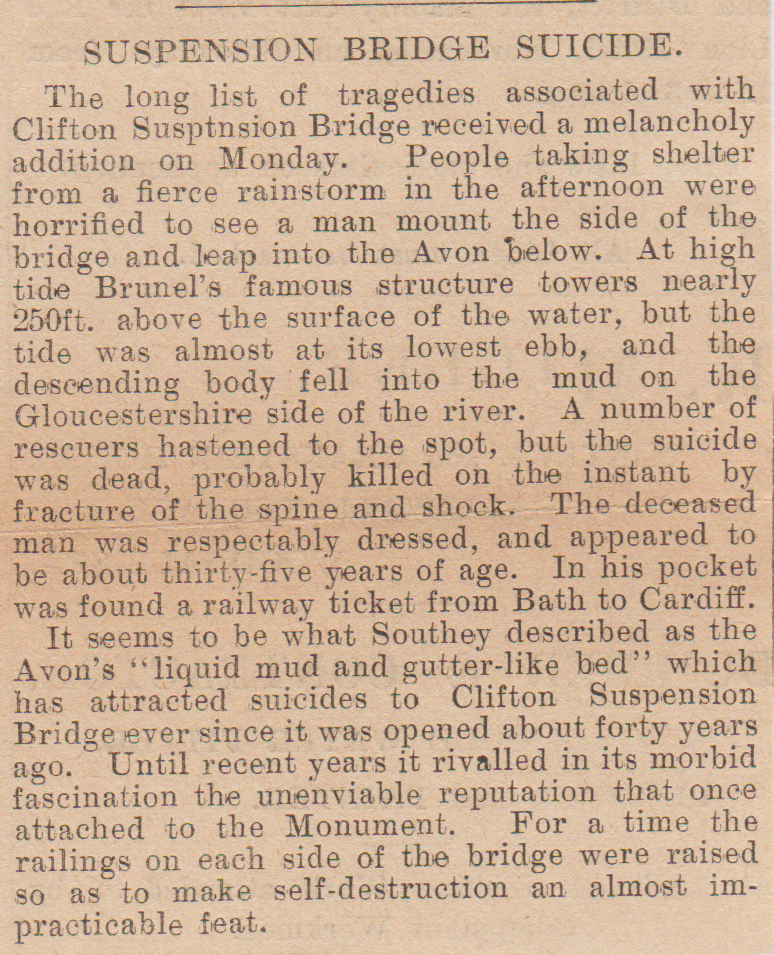
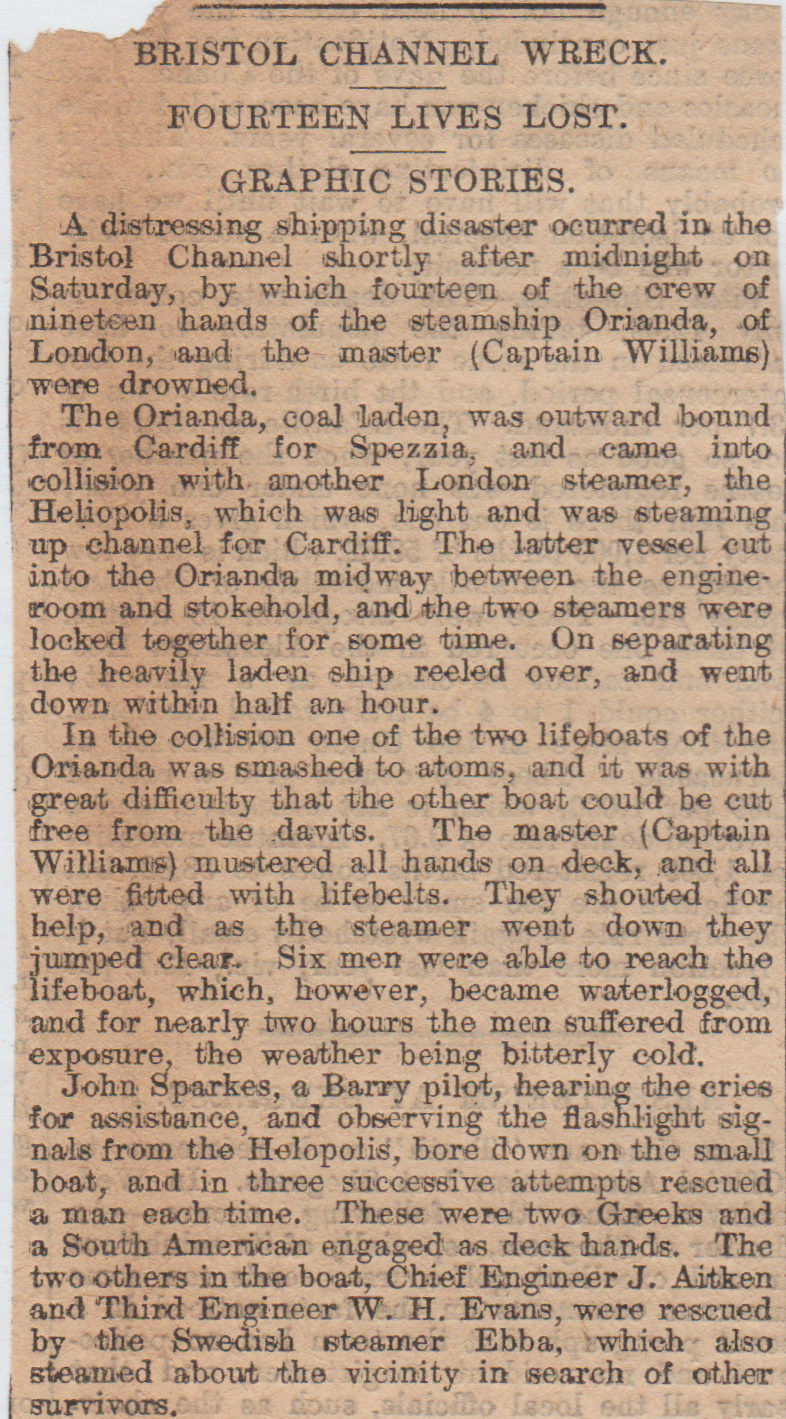

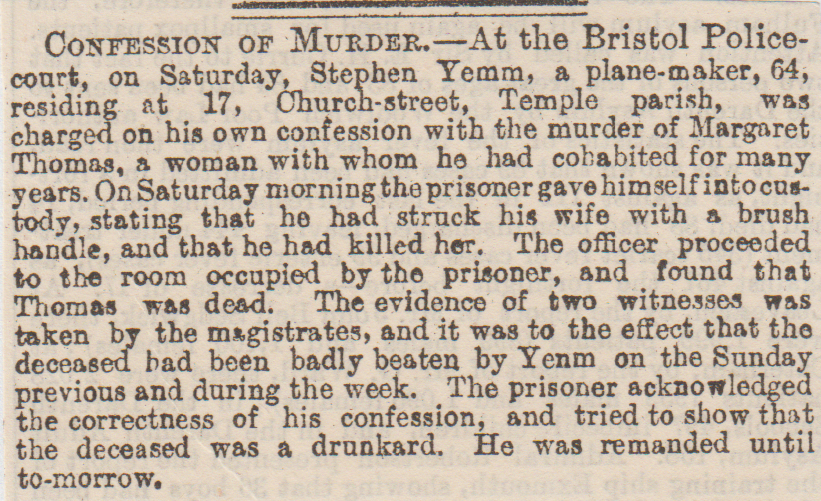




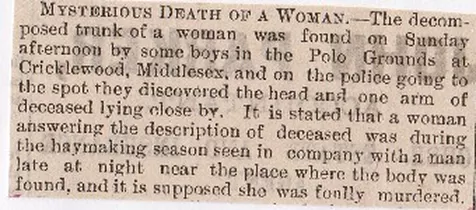


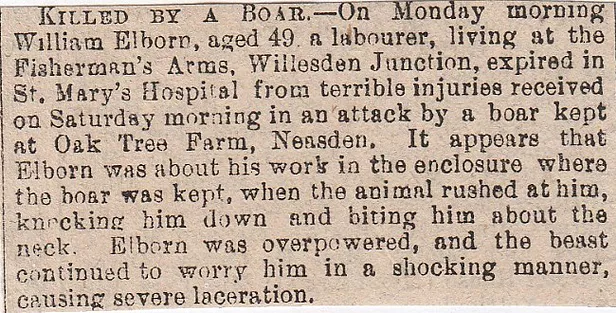
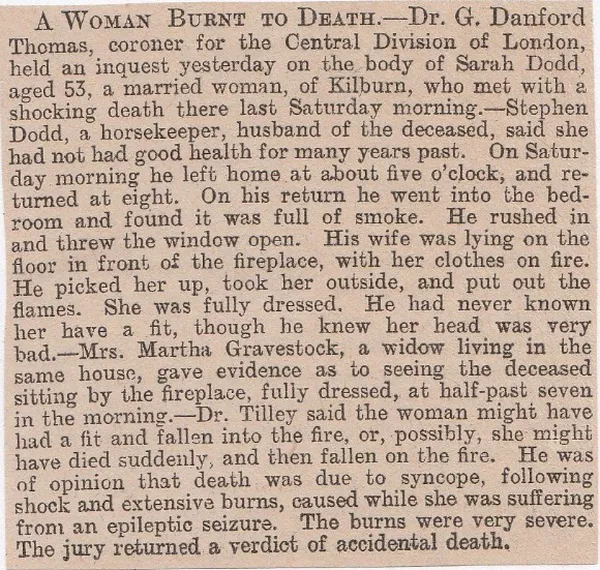


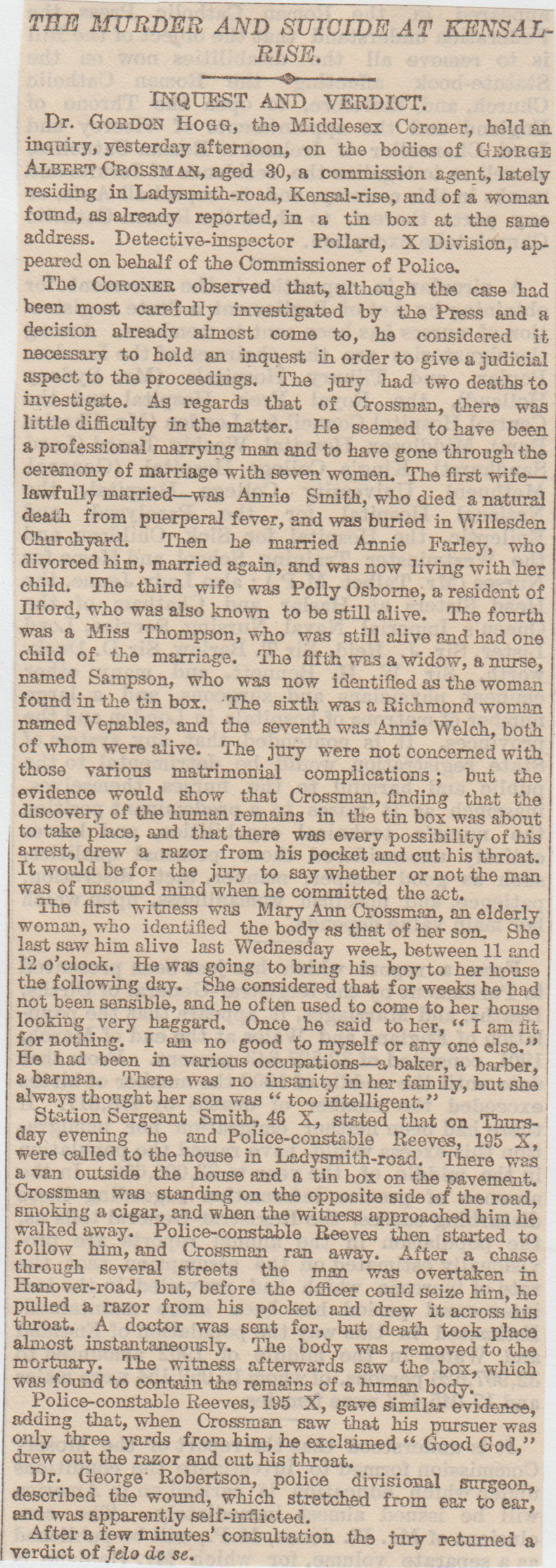


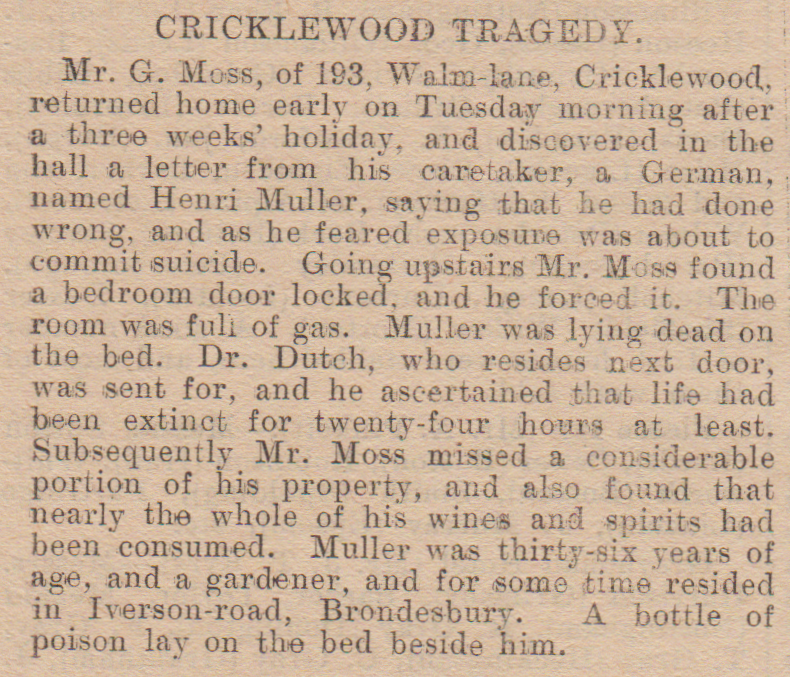

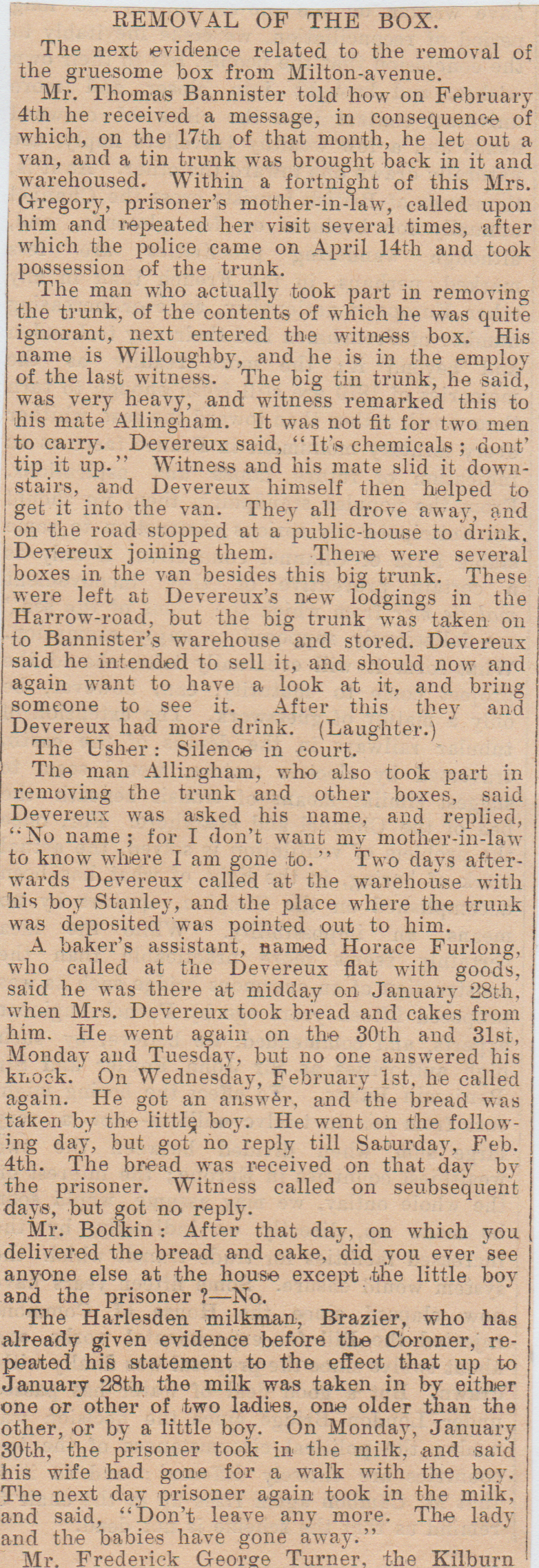
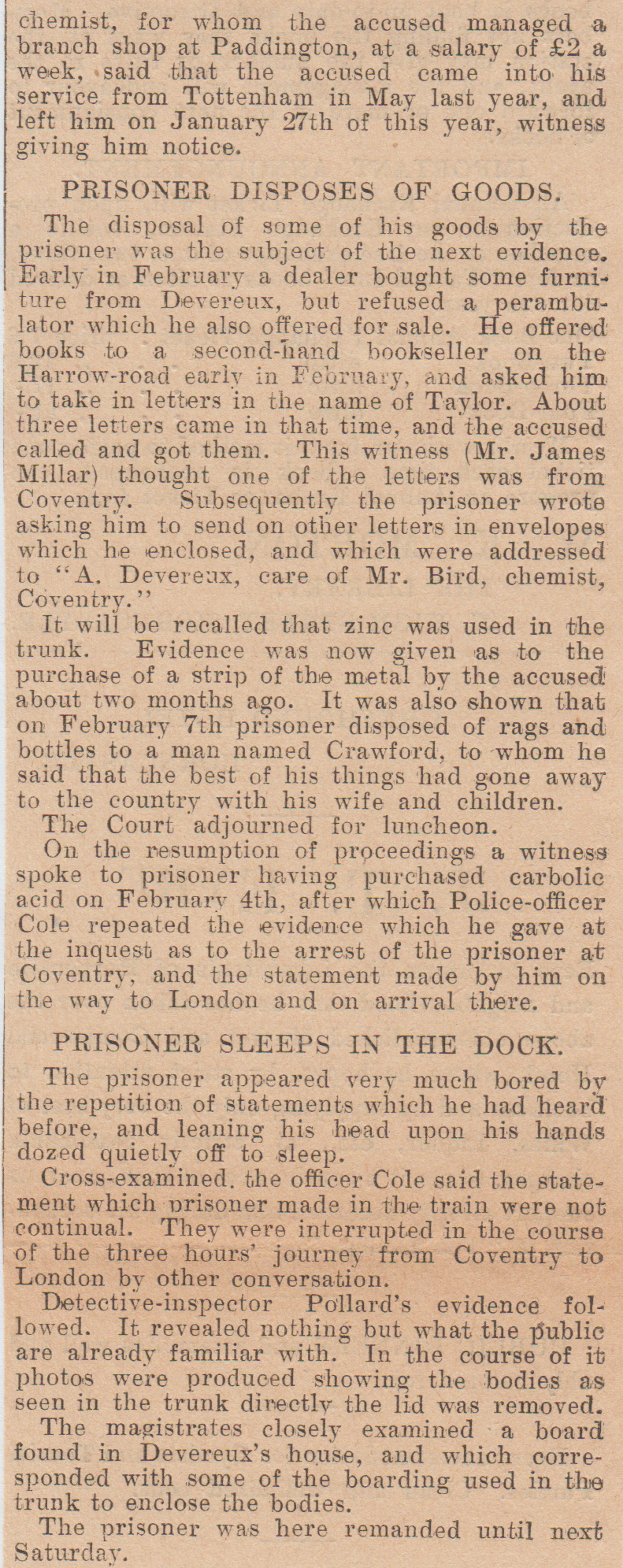

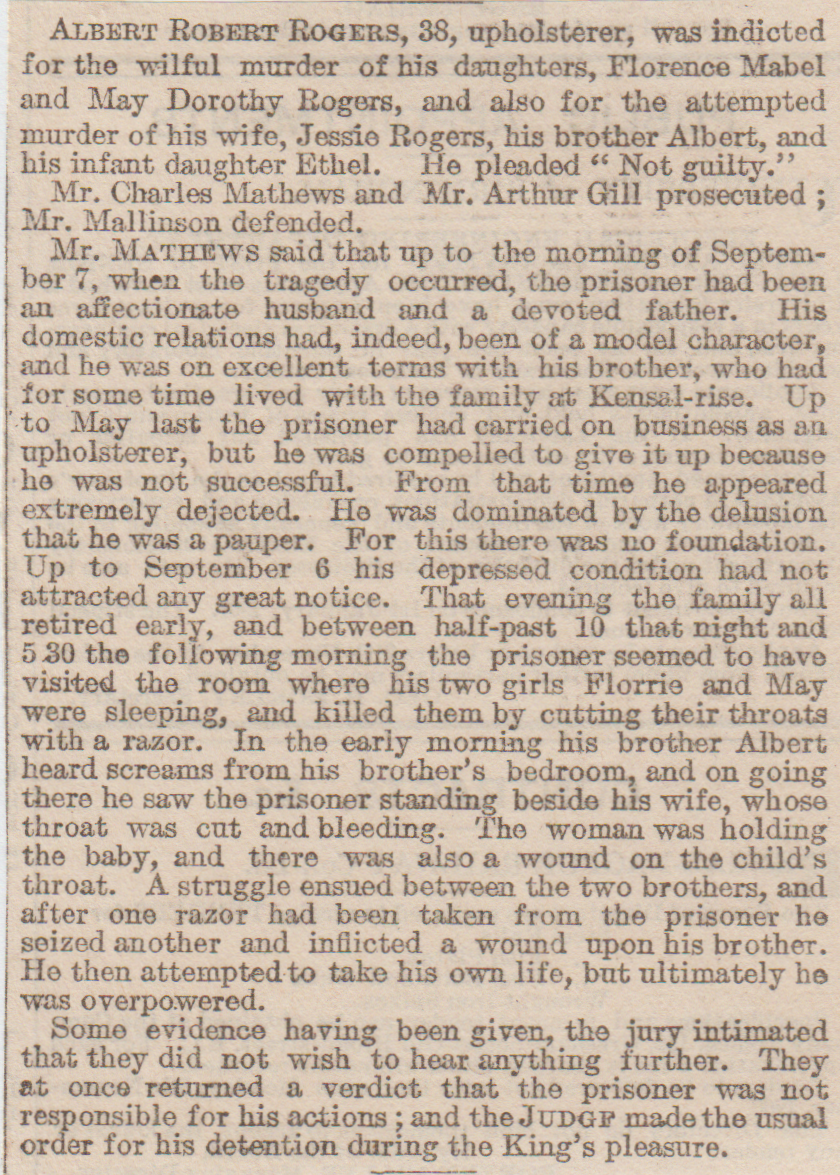
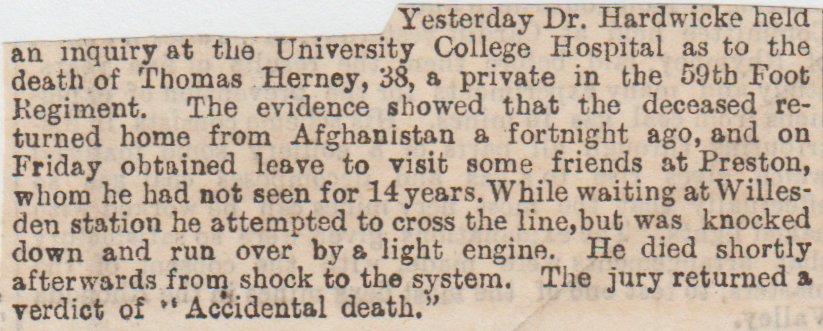
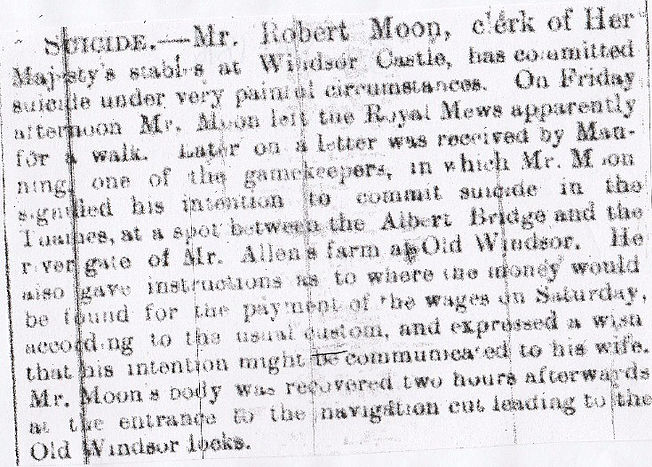
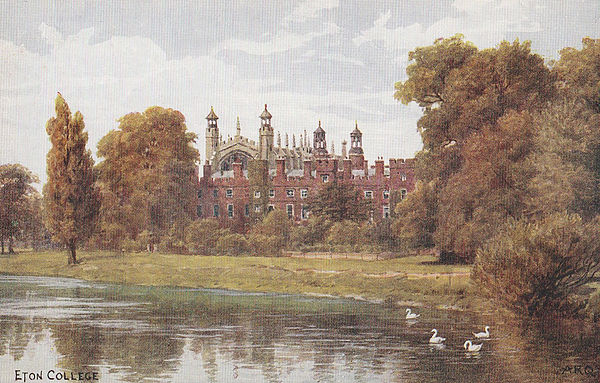
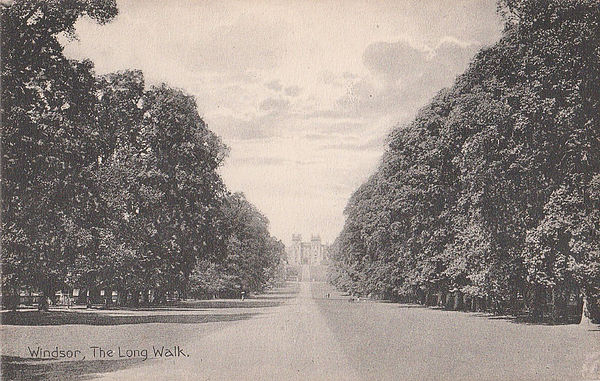 5/ Windsor Great Park, July 1879
5/ Windsor Great Park, July 1879

 8/ Windsor Castle Suicide, July 1863
8/ Windsor Castle Suicide, July 1863

